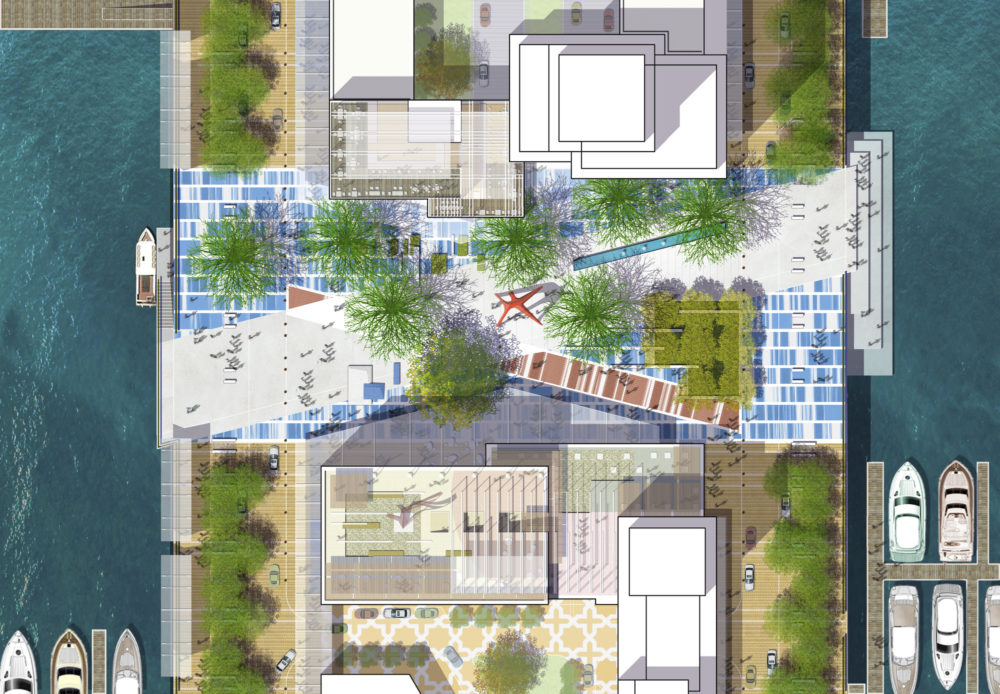
Marina District Detailed Master Plan
United Arab Emirates
 Sasaki
Sasaki
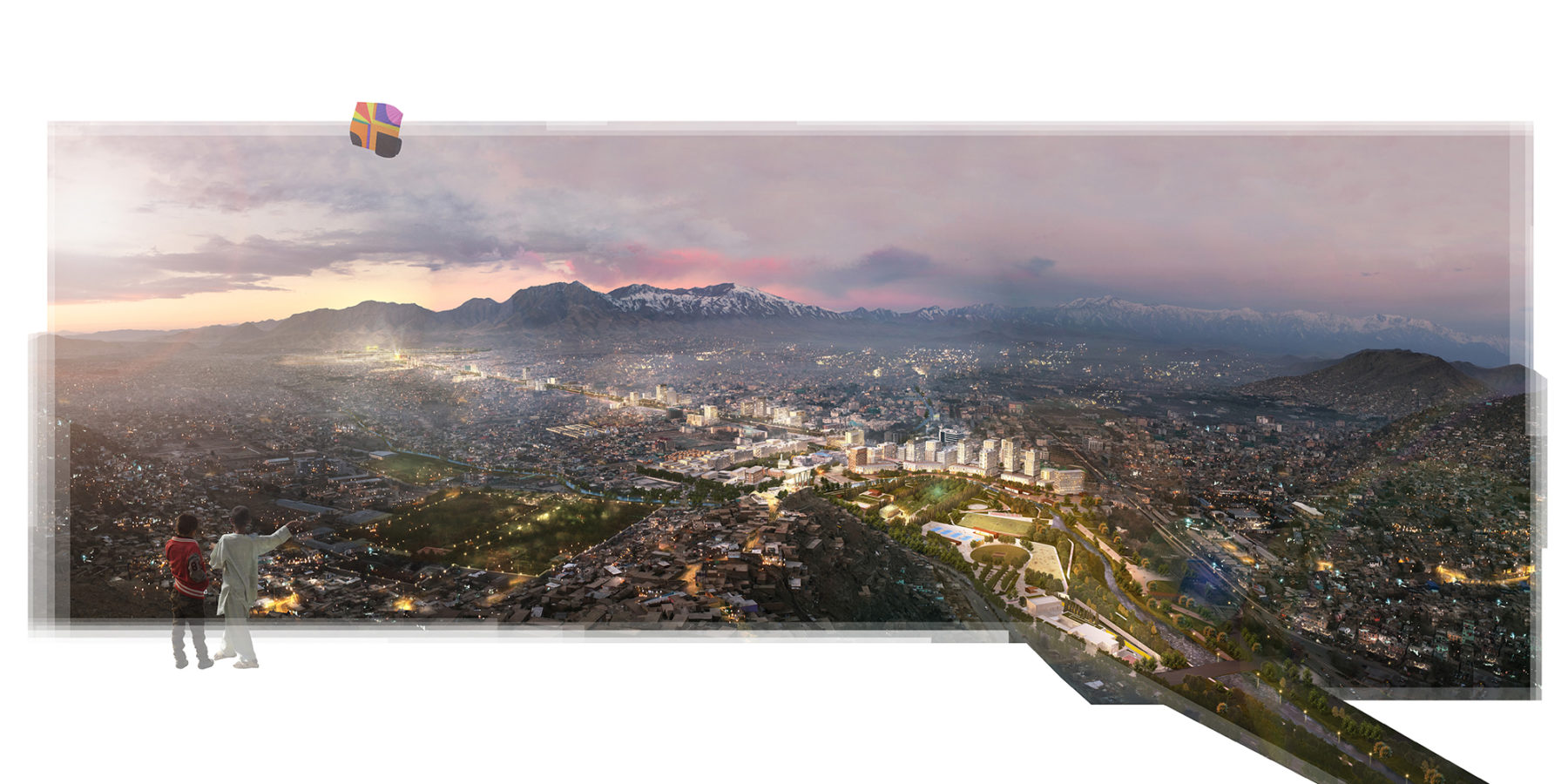
Today, as Afghanistan looks forward to the 21st century, our design team is working with the Afghan government to realize the promise of this young democracy
Under the leadership of President Ashraf Ghani and the Afghan Ministry of Urban Development and Housing, the Kabul Urban Design Framework establishes a vision and a roadmap for transforming the city into a model of sustainable, equitable, and resilient development.
The overall effort consists of three elements: a Citywide Framework for urban development and growth, and corridor designs for two iconic roads: Dar ul-Aman Boulevard and Massoud Boulevard. The Urban Design Framework covers a range of issues that are shaping Kabul’s form today: infrastructure, housing, mobility, and sustainability. It also reaches beyond traditional themes of physical design to cover topics particularly relevant to the physical and social fabric of the city today: women in Kabul, higher education, and cultural conservation.
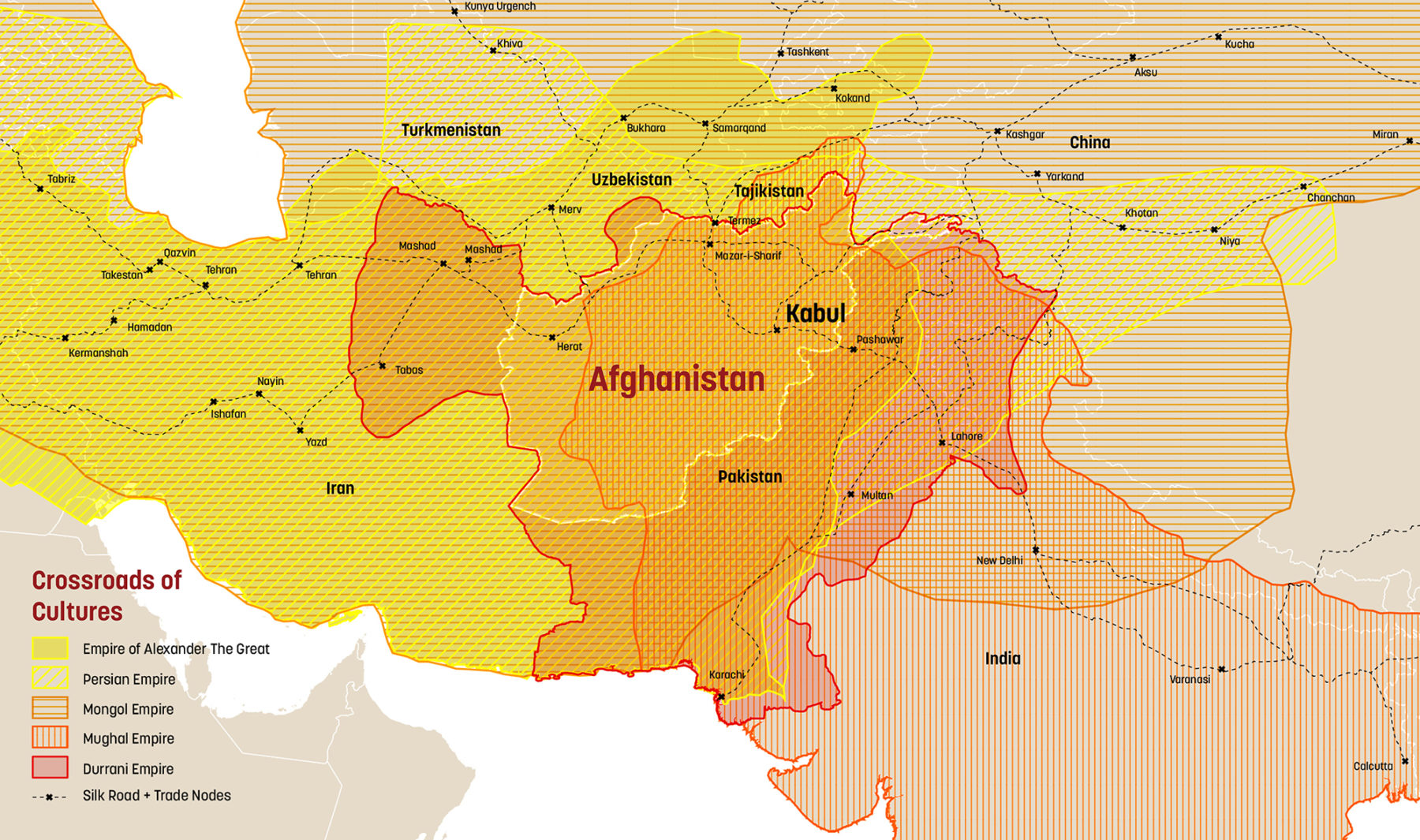
This vision recognizes Afghanistan’s rich cultural heritage while looking to the future
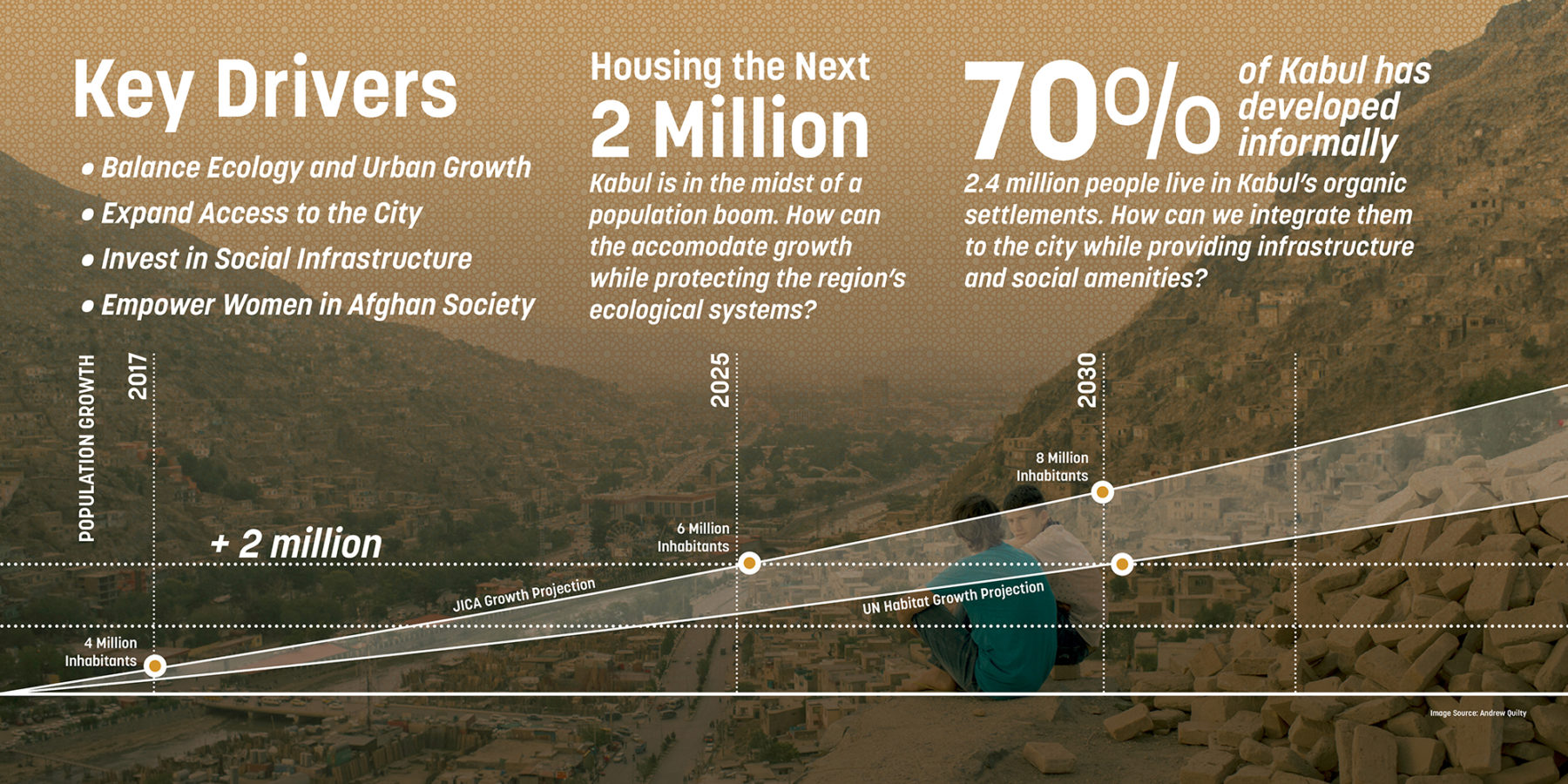
With an expected population growth of more than 2 million by 2025, how can this growth be accommodated while protecting the region’s ecological systems?
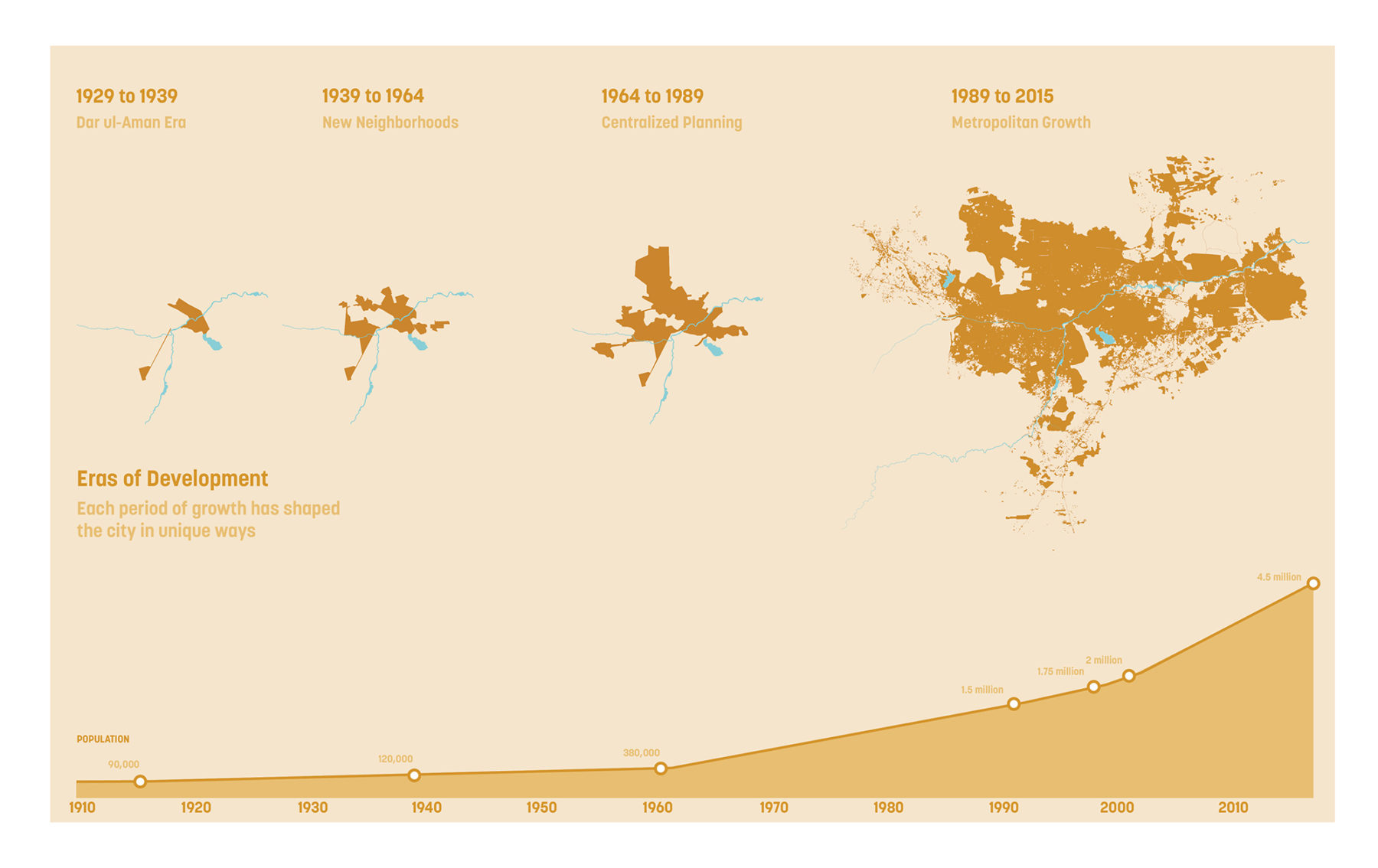
Kabul has undergone distinct eras of sociocultural development
Kabul is a city at the crossroads of cultures, ecological systems, and political currents, each of which has contributed to the identity of the city today. 20 years into building a new civil society, the opportunity for Kabul in this moment is immense. The Citywide Framework establishes a design-driven agenda for Kabul’s evolution at the metropolitan scale. The challenges are significant: over 70% of the city has developed informally, and its population has grown by over 2 million people in just the last 10 years. The Citywide Framework establishes a vision that addresses each of these issues while also positioning the city for the 21st Century. An ambitious growth strategy simultaneously moves growth away from environmentally sensitive aquifers, restores an agricultural belt, and establishes new locations for investment in education institutions and economic development zones. A set of development typologies provide flexible, context-sensitive design guidelines throughout the city, providing a much needed mechanism for shaping development. This blend of site-specific design and citywide guidance is applied to other topics as well, including the opportunity to integrate informal settlements into the city.
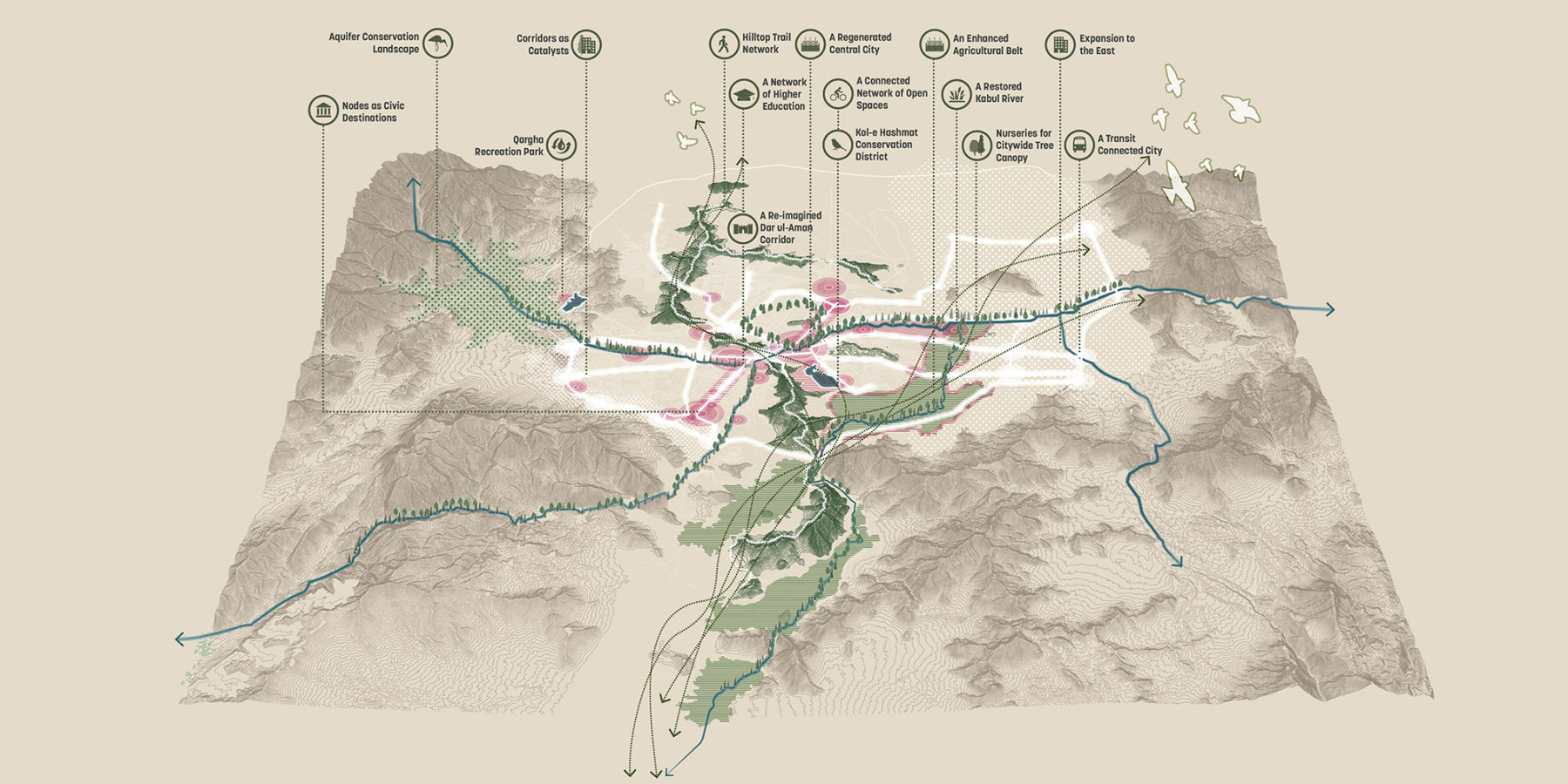
Distinct features across the city come together to create a unified vision
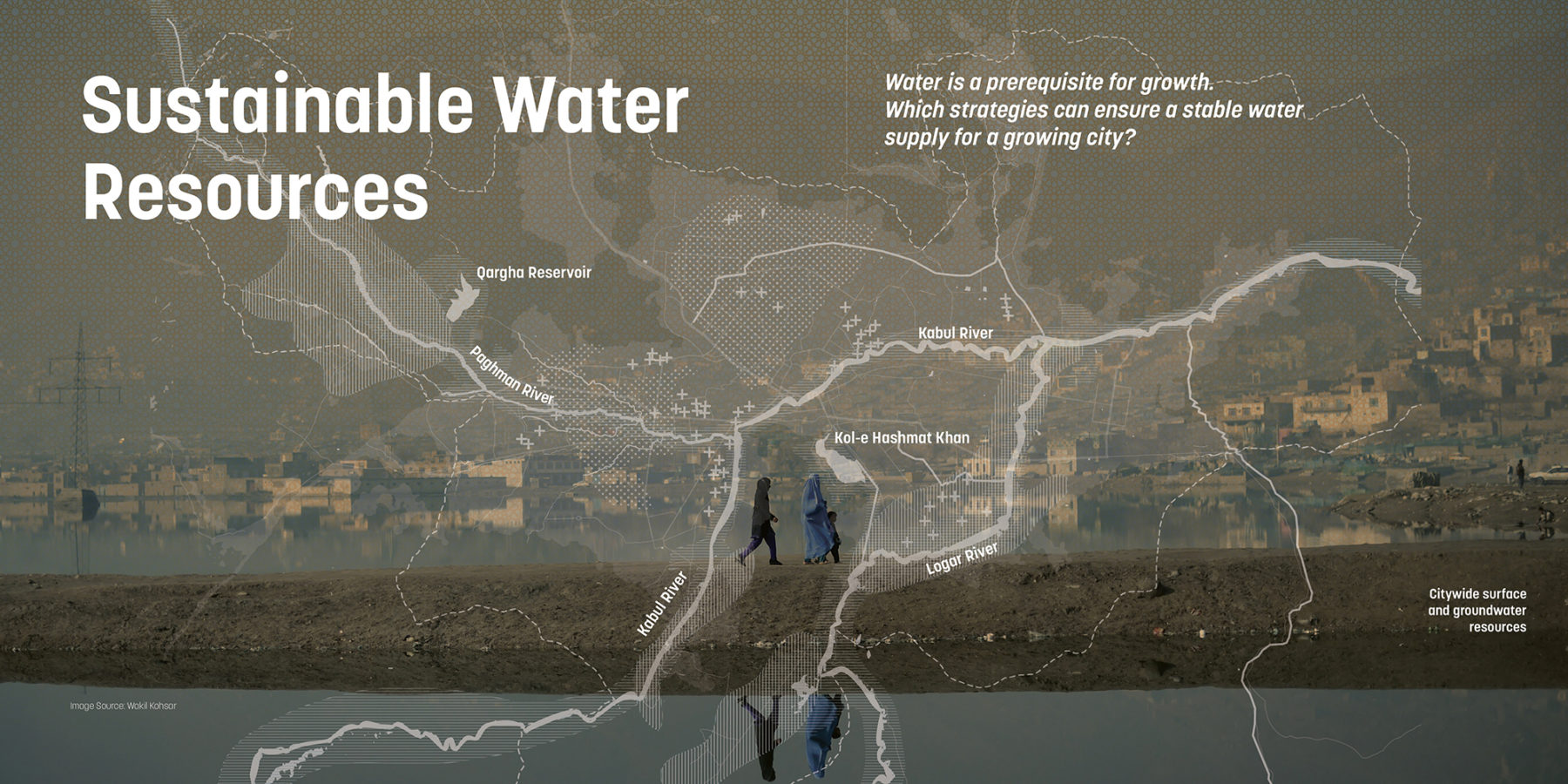
The plan includes several strategies to reconcile urban growth, including protecting natural systems, restoring ecological functions, and preserving local habitats
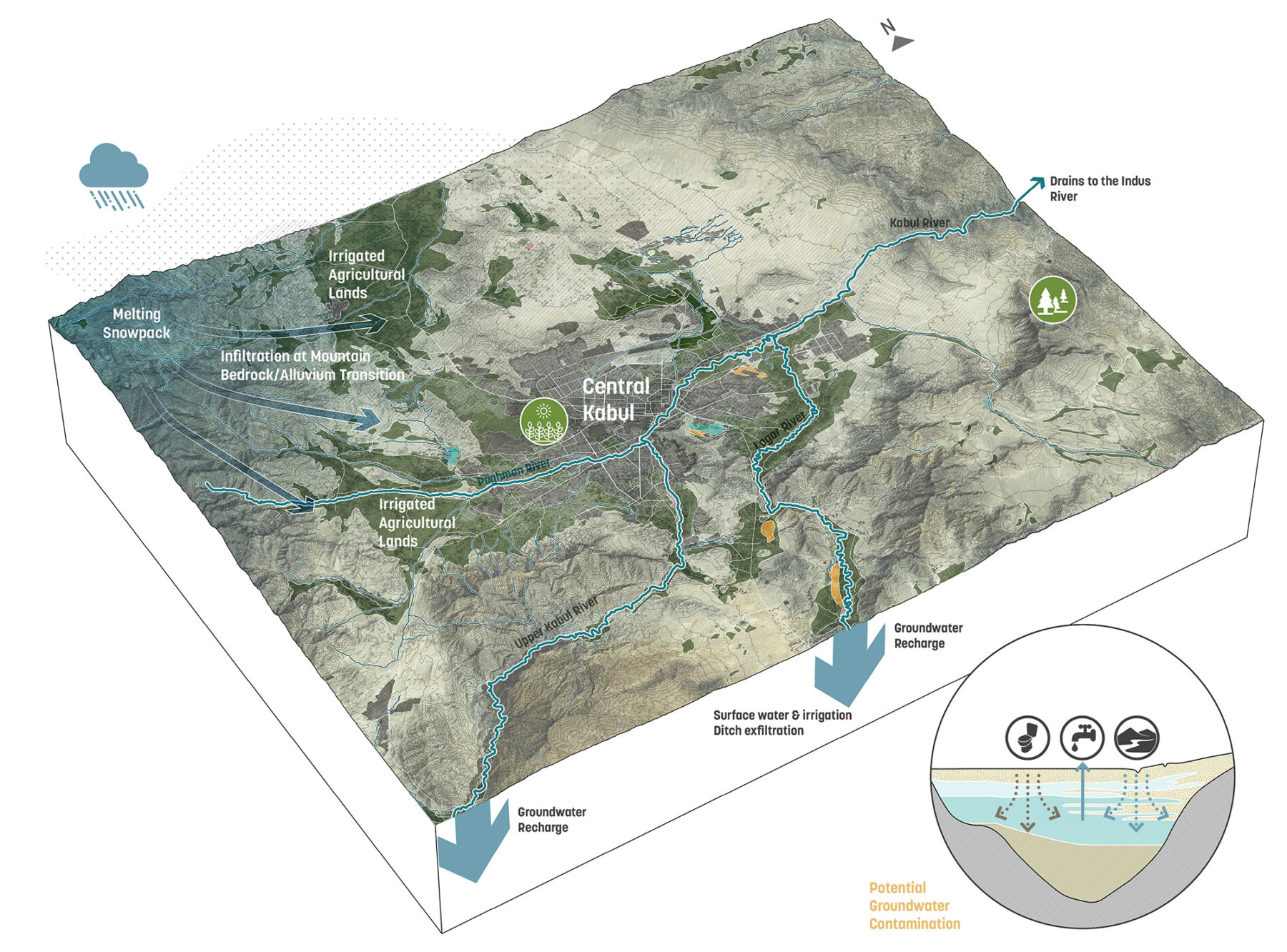
Snowmelt from the western mountains and fertile agricultural lands to the east bookend Kabul’s regional ecology
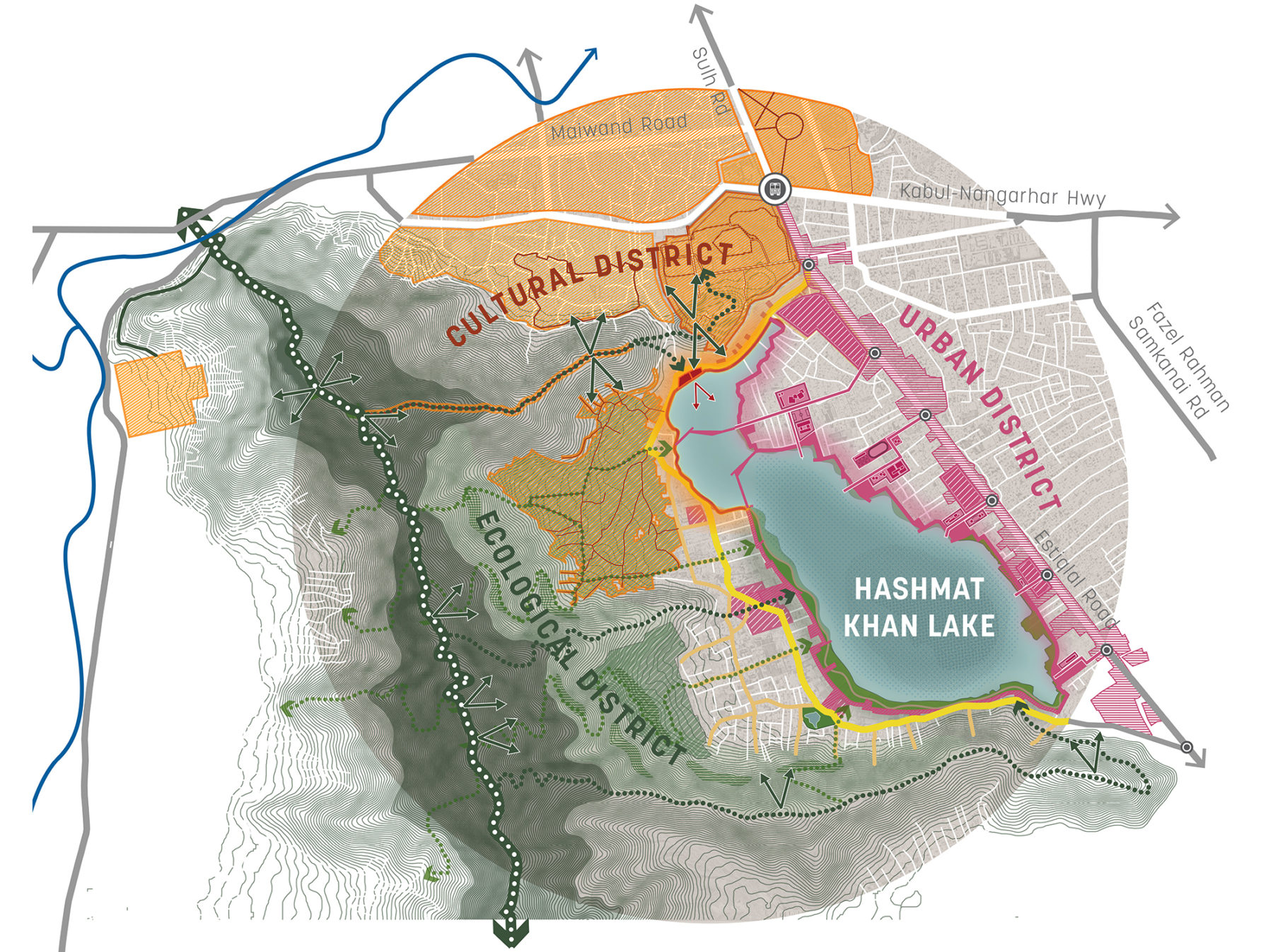
Ecologically vital sites, such as the Hashmat Khan Lake, are protected from encroachment and transformed into cultural and recreational amenities
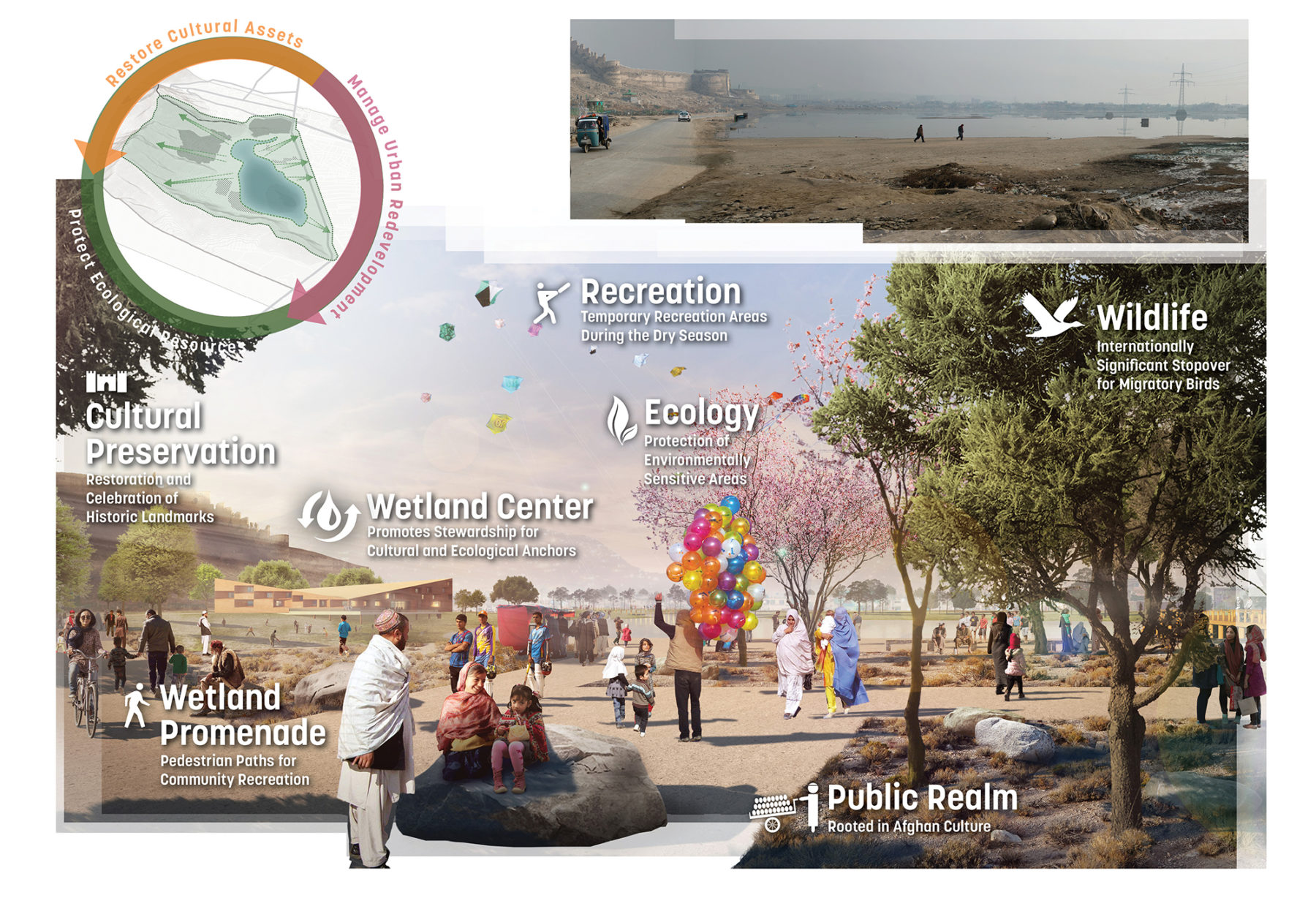
The Urban Design Framework establishes the lake as a conservation district that will support ecological regeneration and social investment for its surrounding communities
Snowmelt from the western mountains and fertile agricultural lands to the east bookend Kabul’s regional ecology
Ecologically vital sites, such as the Hashmat Khan Lake, are protected from encroachment and transformed into cultural and recreational amenities
The Urban Design Framework establishes the lake as a conservation district that will support ecological regeneration and social investment for its surrounding communities
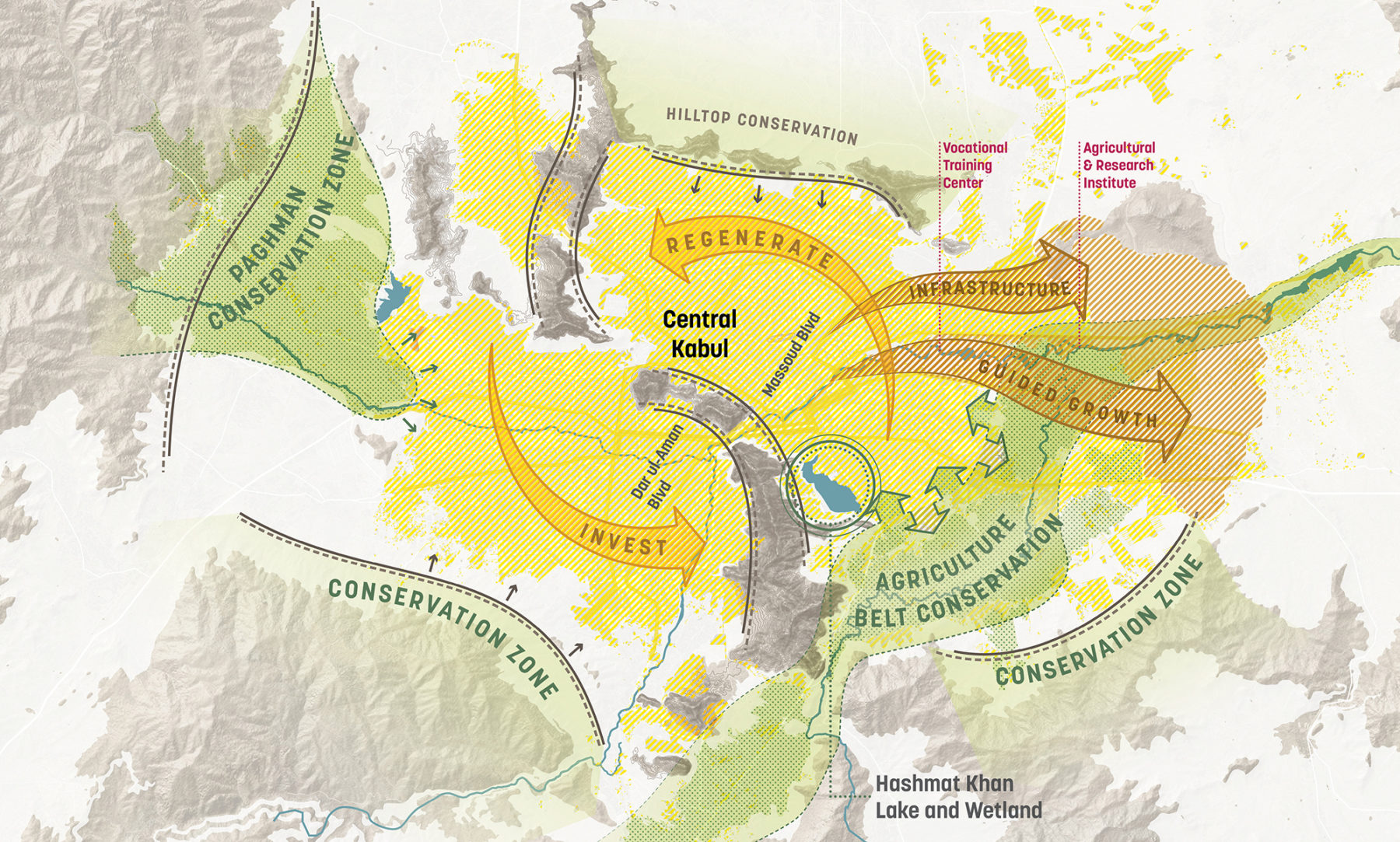
The Framework outlines strategies that direct urban expansion away from areas of ecological importance and reinforce existing networks to provide social amenities for all
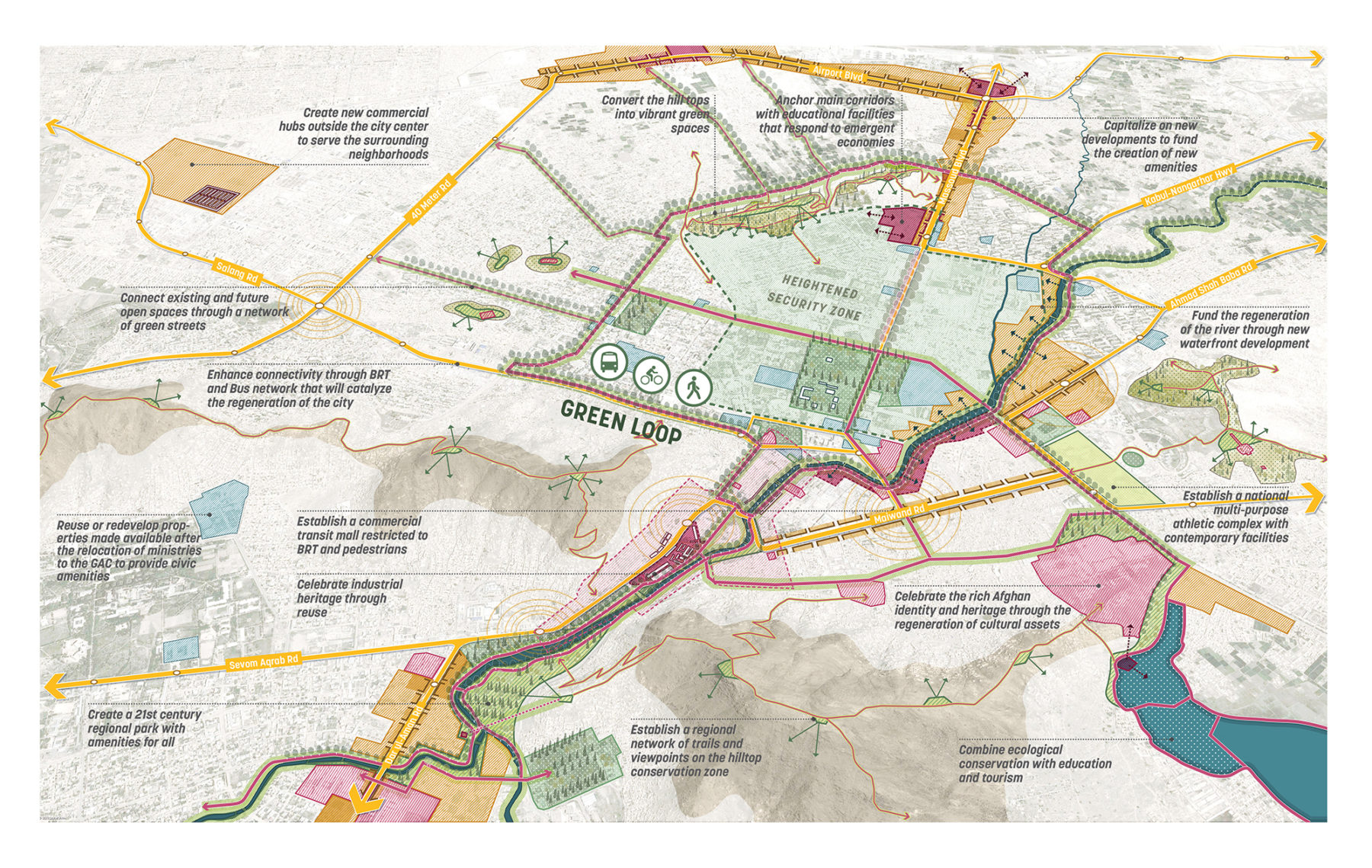
Commercial and recreational amenities around the city will be connected by a variety of transportation options
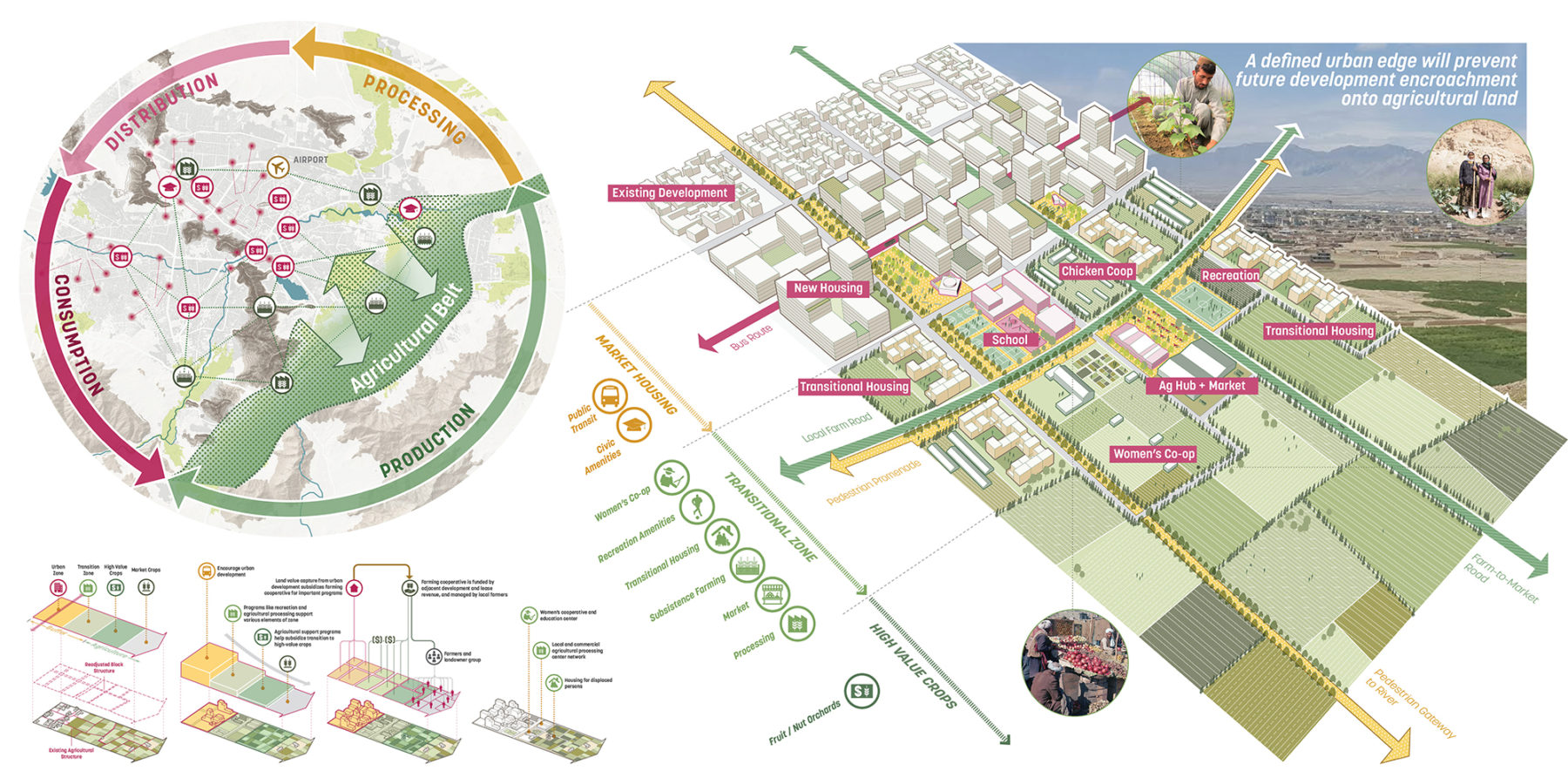
The framework ensures the connection between agriculture and the city remain tightly linked, leveraging the existing agricultural belt east of central Kabul as a crucial component of this relationship
The second set of activities focus on two important corridors. Dar ul-Aman and Massoud Boulevards are envisioned as a demonstration to the world of what is possible in Kabul, becoming engines of urban and social regeneration.
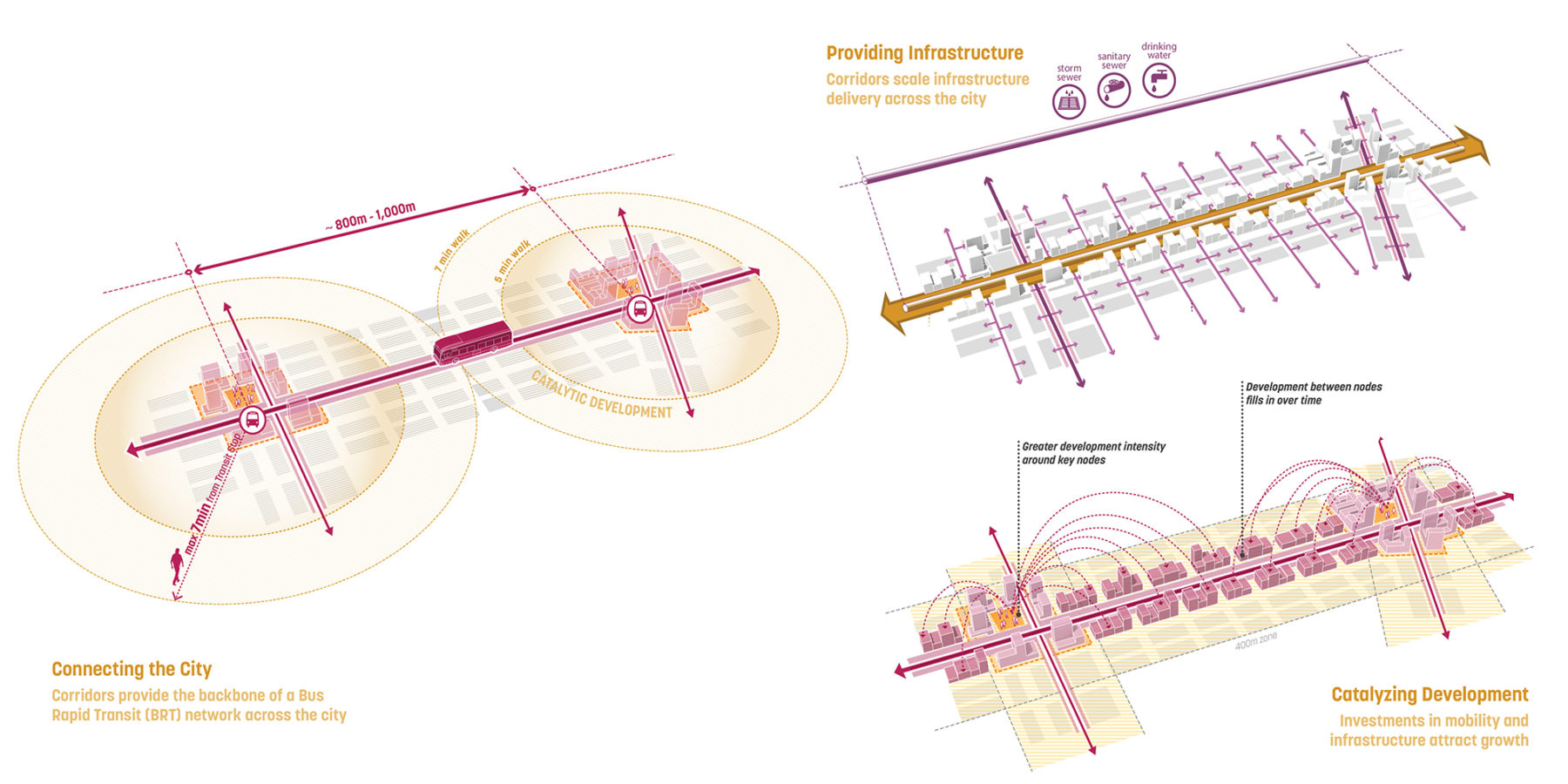
Expand Access to the City Kabul’s corridors are critical to this Framework’s vision of investing in the existing city fabric and promoting compact, sustainable development
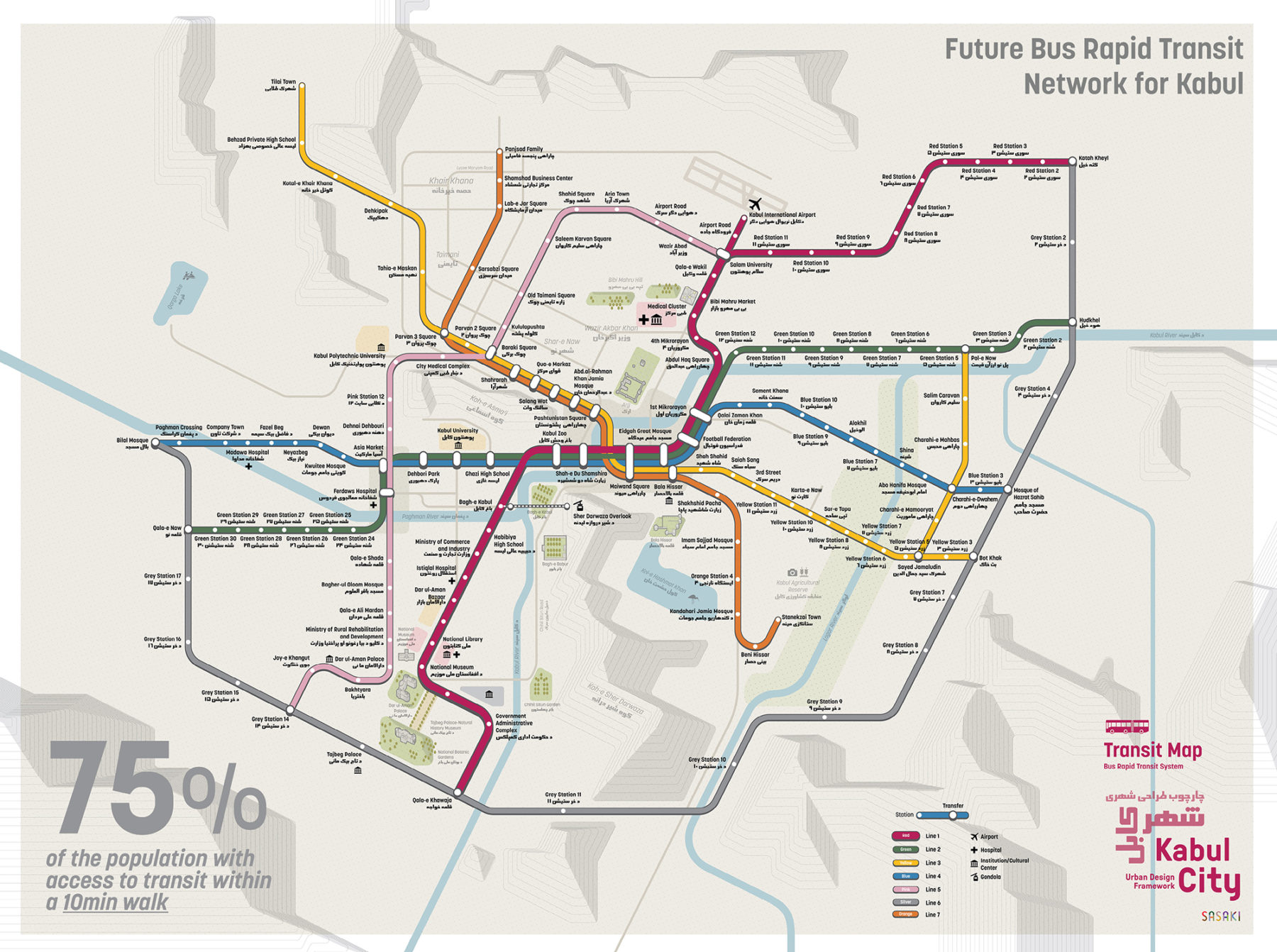
A citywide bus rapid transit (BRT) system will further catalyze economic investment in Kabul
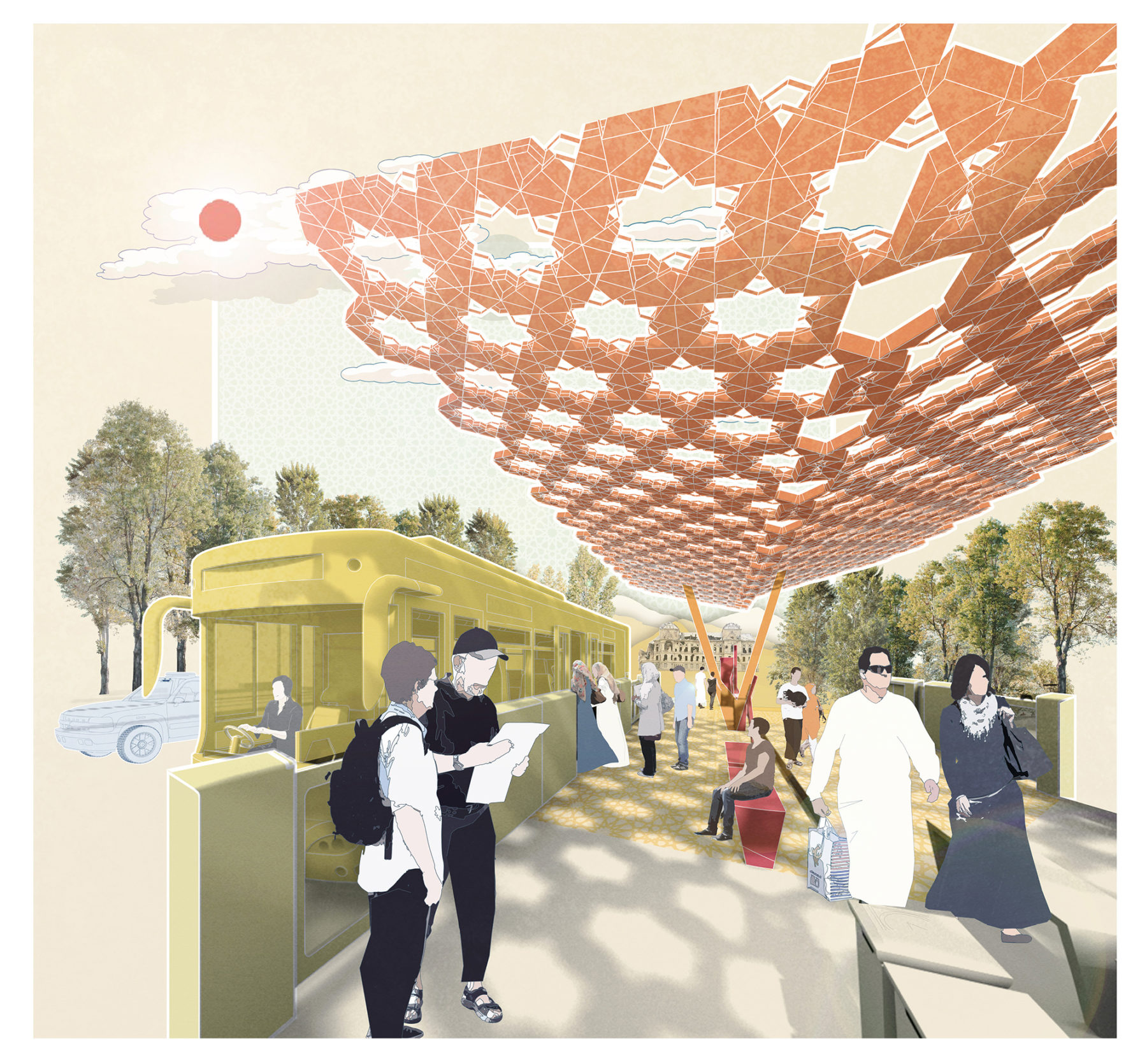
The BRT system will ensure that 75% of the population will have access to transit within a 10-minute walk
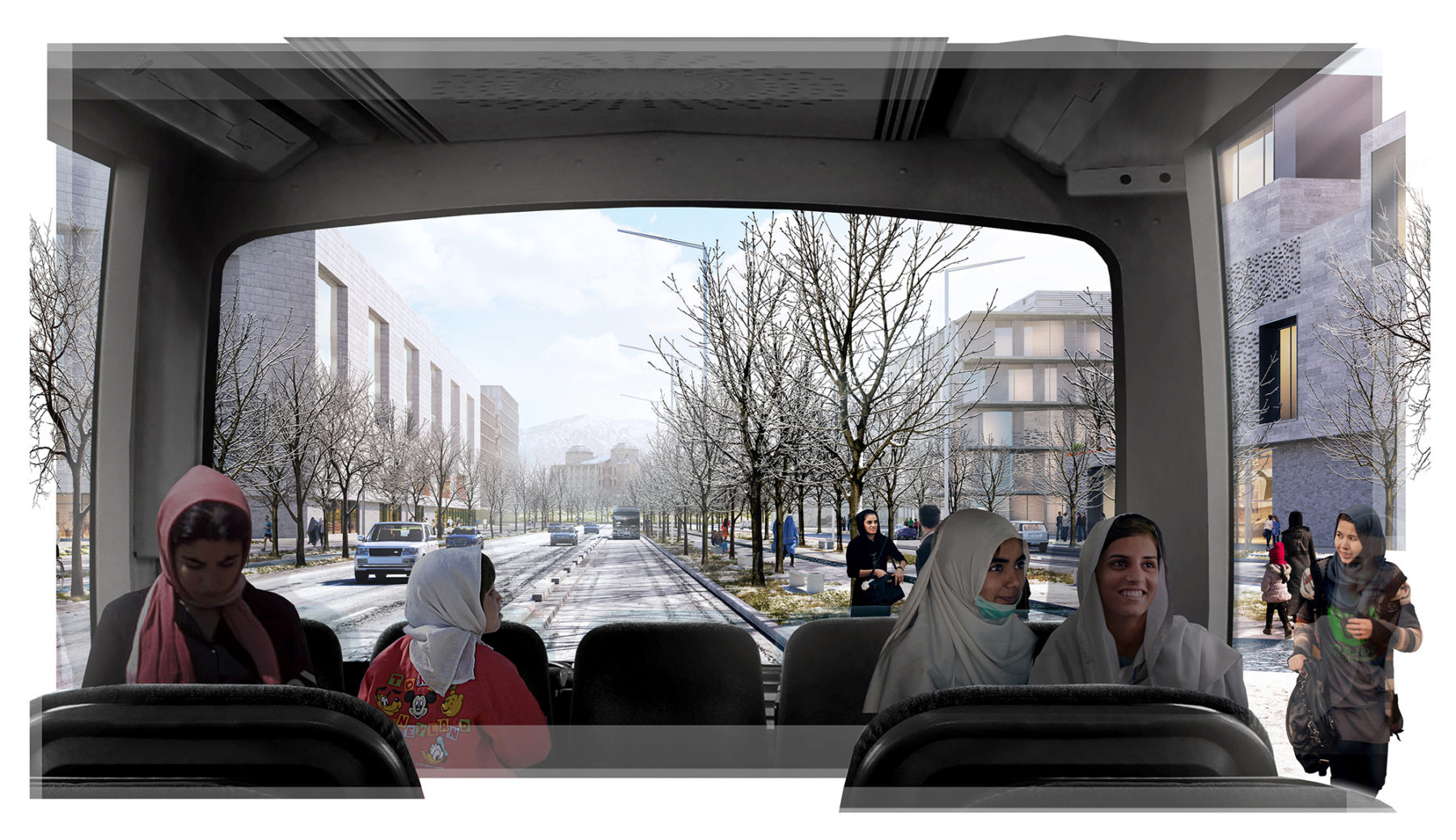
The framework ensures that everyone feels safe in the city, including women
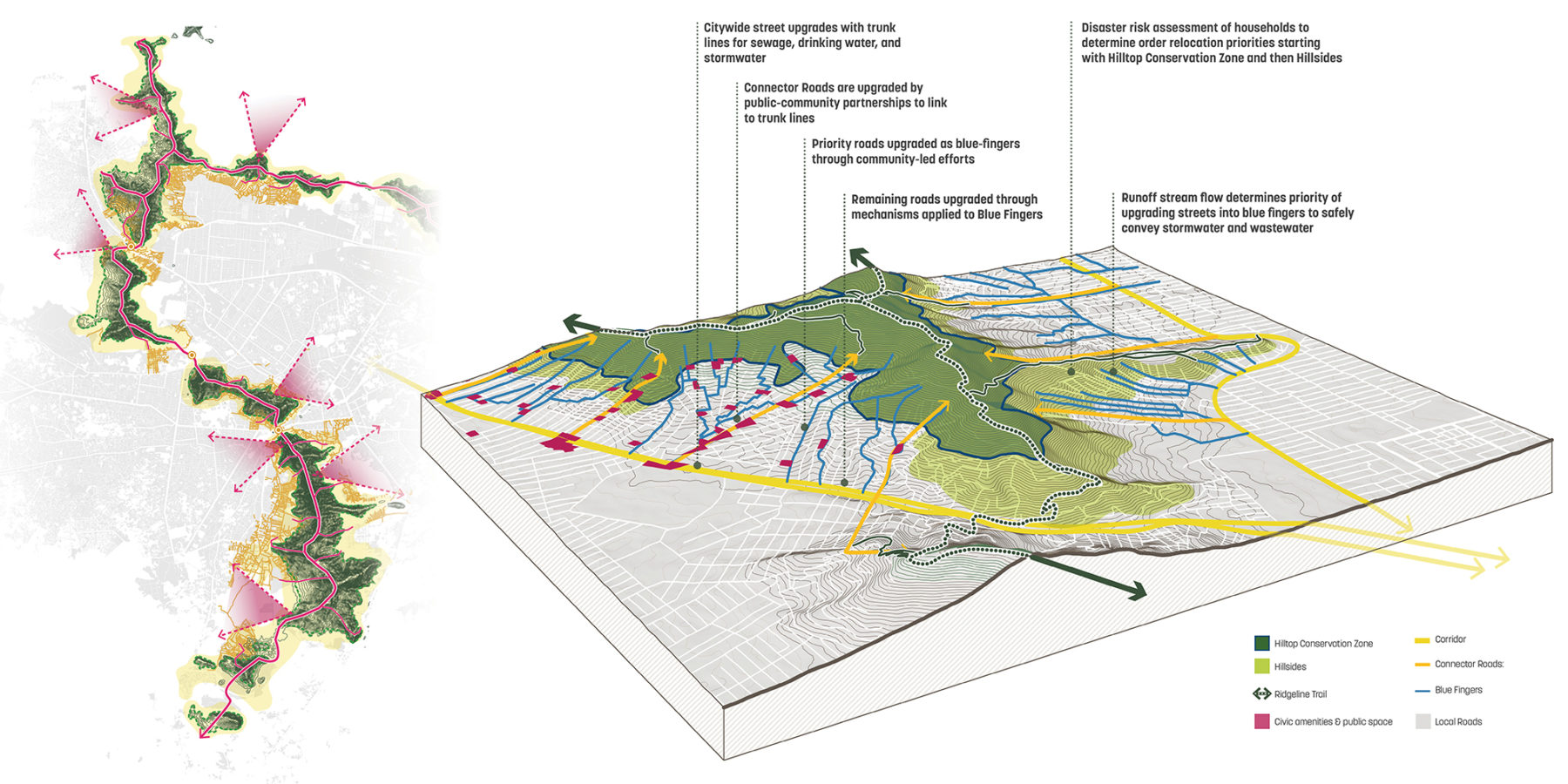
Kabul’s hills are threatened by informal growth that house the city’s most vulnerable population. The Hilltop Conservation Zone delineates a city-wide, legally protected ecological network.
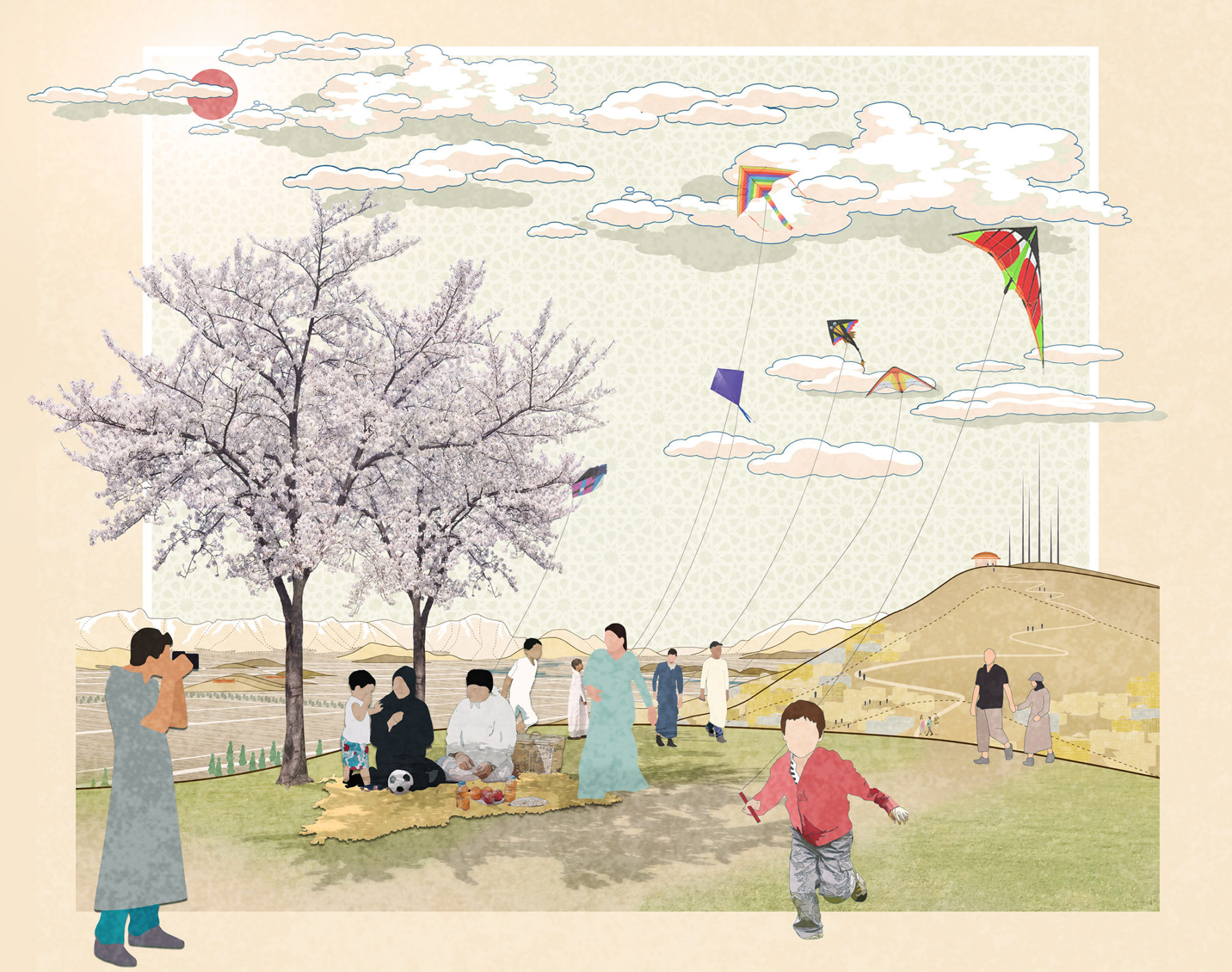
Bagh-e Kabul is a stage for deeper reflections of Afghan history and culture, capturing the aspirations of a youthful democracy
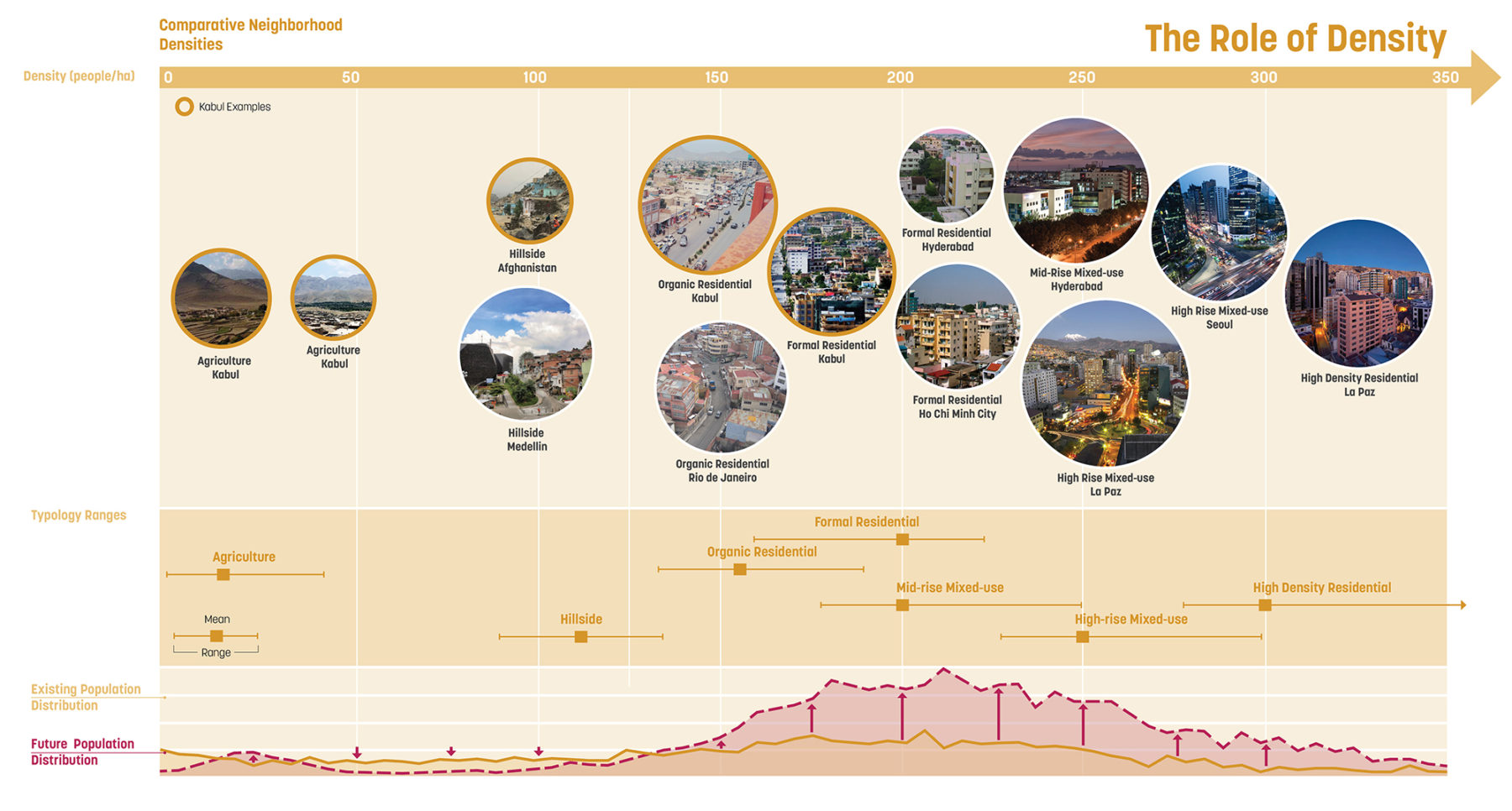
The development of varying types of residential space in the city must accommodate expected increases in urban populations
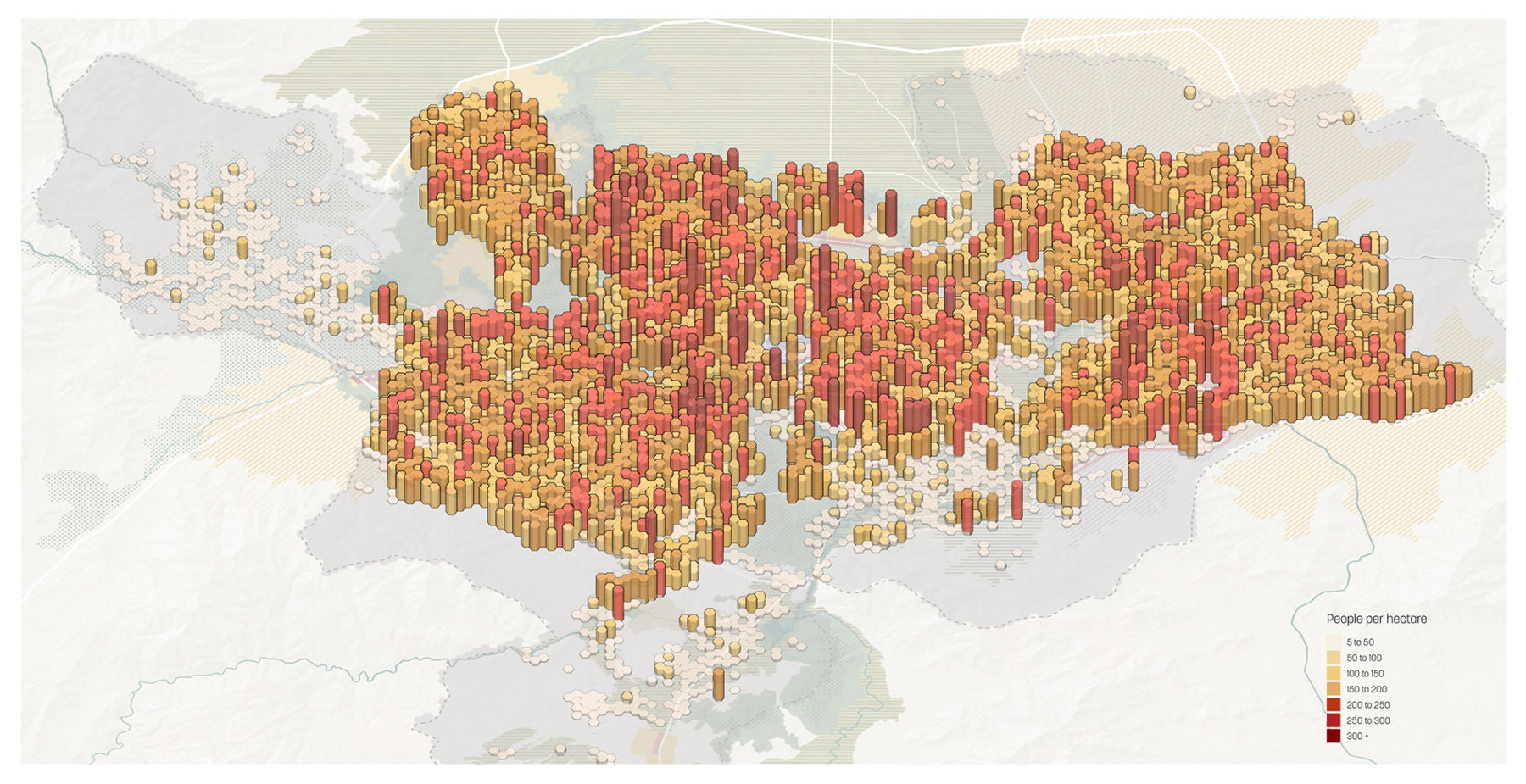
Population distribution across Kabul
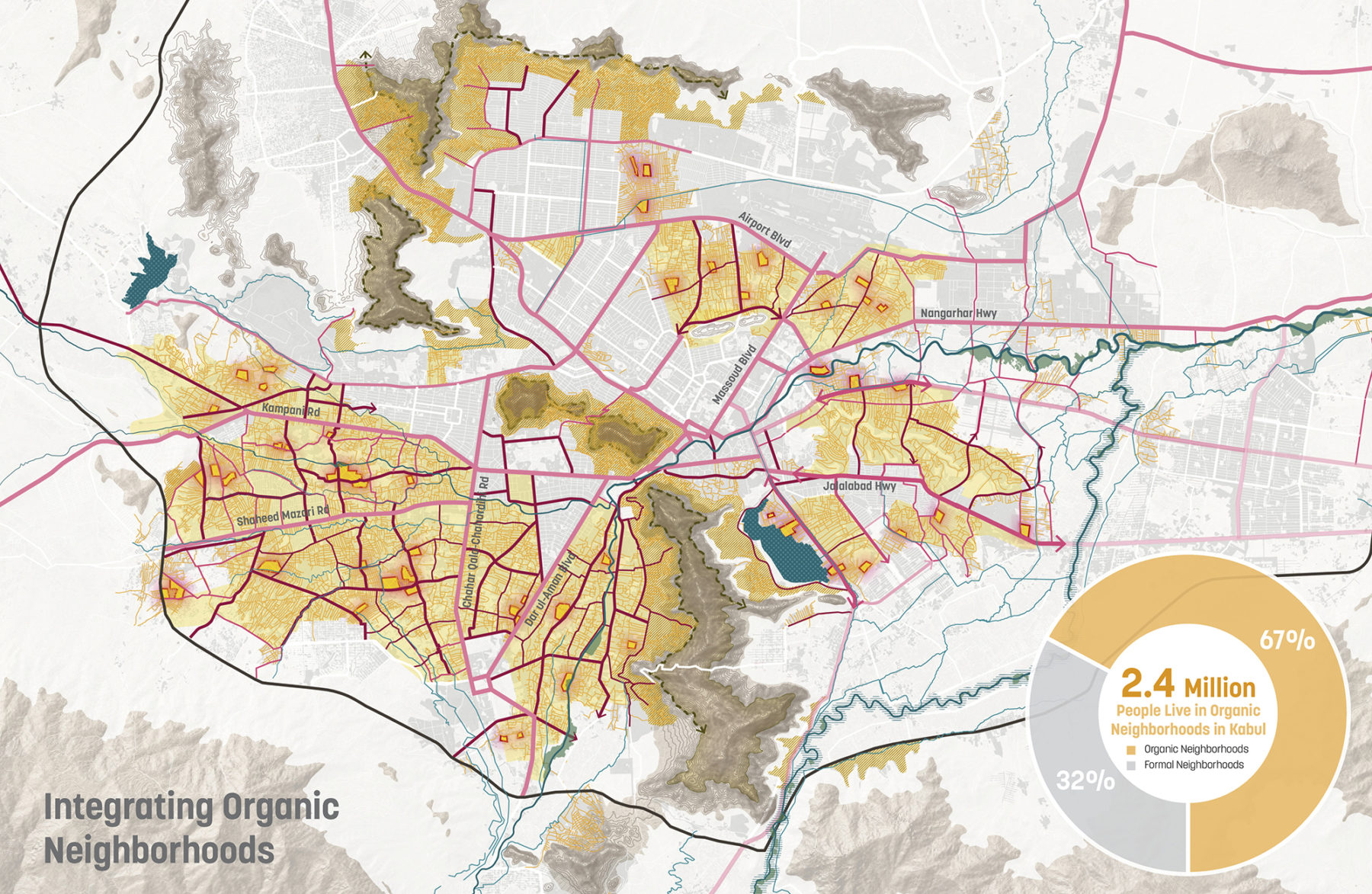
With two-thirds of the city’s population living in organic neighborhoods, growth strategies must consider how to best integrate these neighborhoods with the rest of the city
Kabul’s hills are threatened by informal growth that house the city’s most vulnerable population. The Hilltop Conservation Zone delineates a city-wide, legally protected ecological network.
Bagh-e Kabul is a stage for deeper reflections of Afghan history and culture, capturing the aspirations of a youthful democracy
The development of varying types of residential space in the city must accommodate expected increases in urban populations
Population distribution across Kabul
With two-thirds of the city’s population living in organic neighborhoods, growth strategies must consider how to best integrate these neighborhoods with the rest of the city
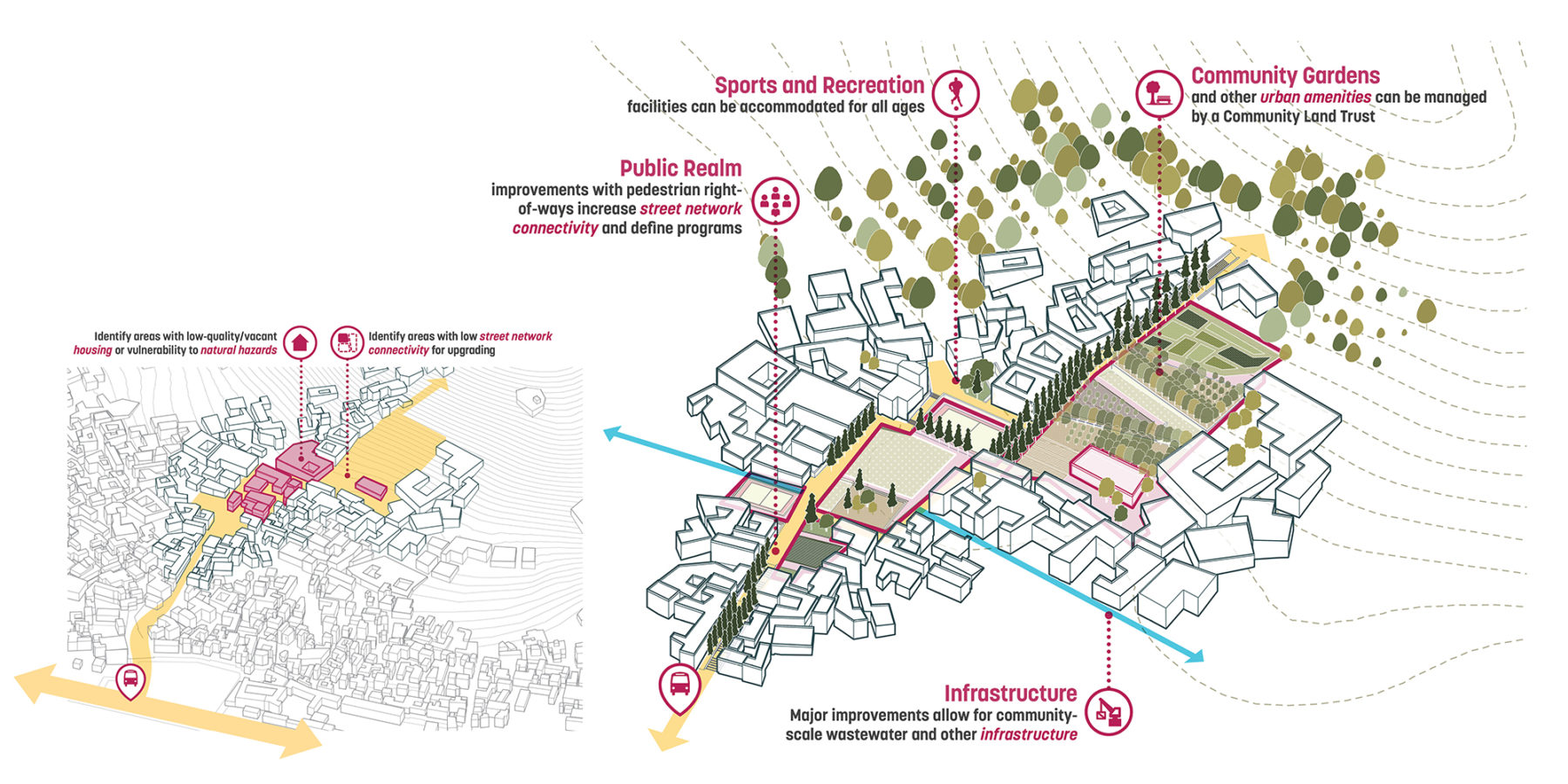
Improvements to public facilities and infrastructure are prioritized in areas vulnerable to natural hazards or with low-quality housing
Ultimately, the Kabul Urban Design Framework is a vision for the kind of city Kabul can become. That vision, coupled with implementation strategies, will create opportunity for millions of Afghans for generations to come.
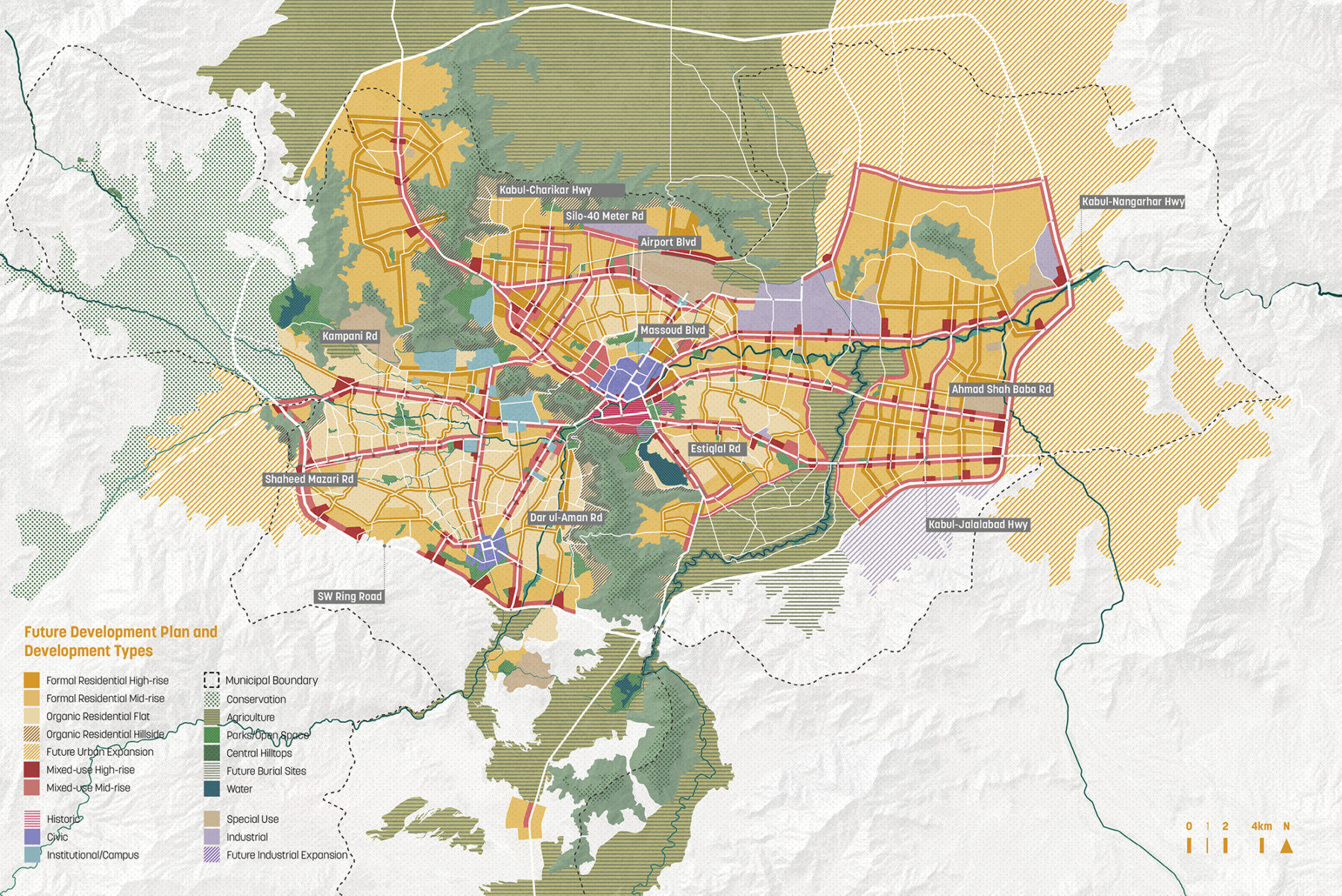
The Development Plan will guide the city’s evolution over the next two decades, along with Corridor Guidelines, Open Space Typologies, Urban Design Typologies, and Landscape Planning Strategies that will inform decision-makers
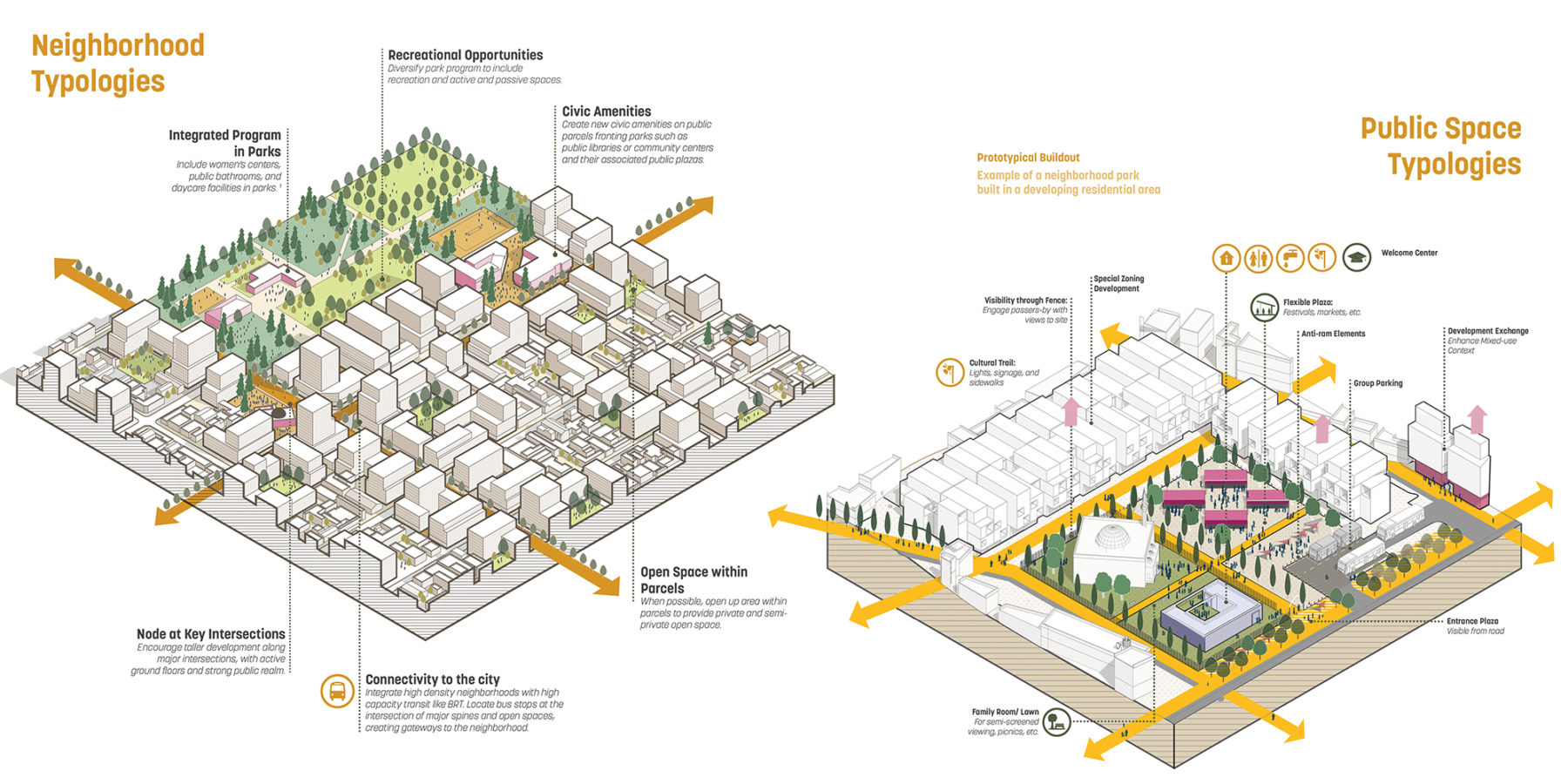
Typologies for neighborhoods and public space prioritize connectivity and civic amenities
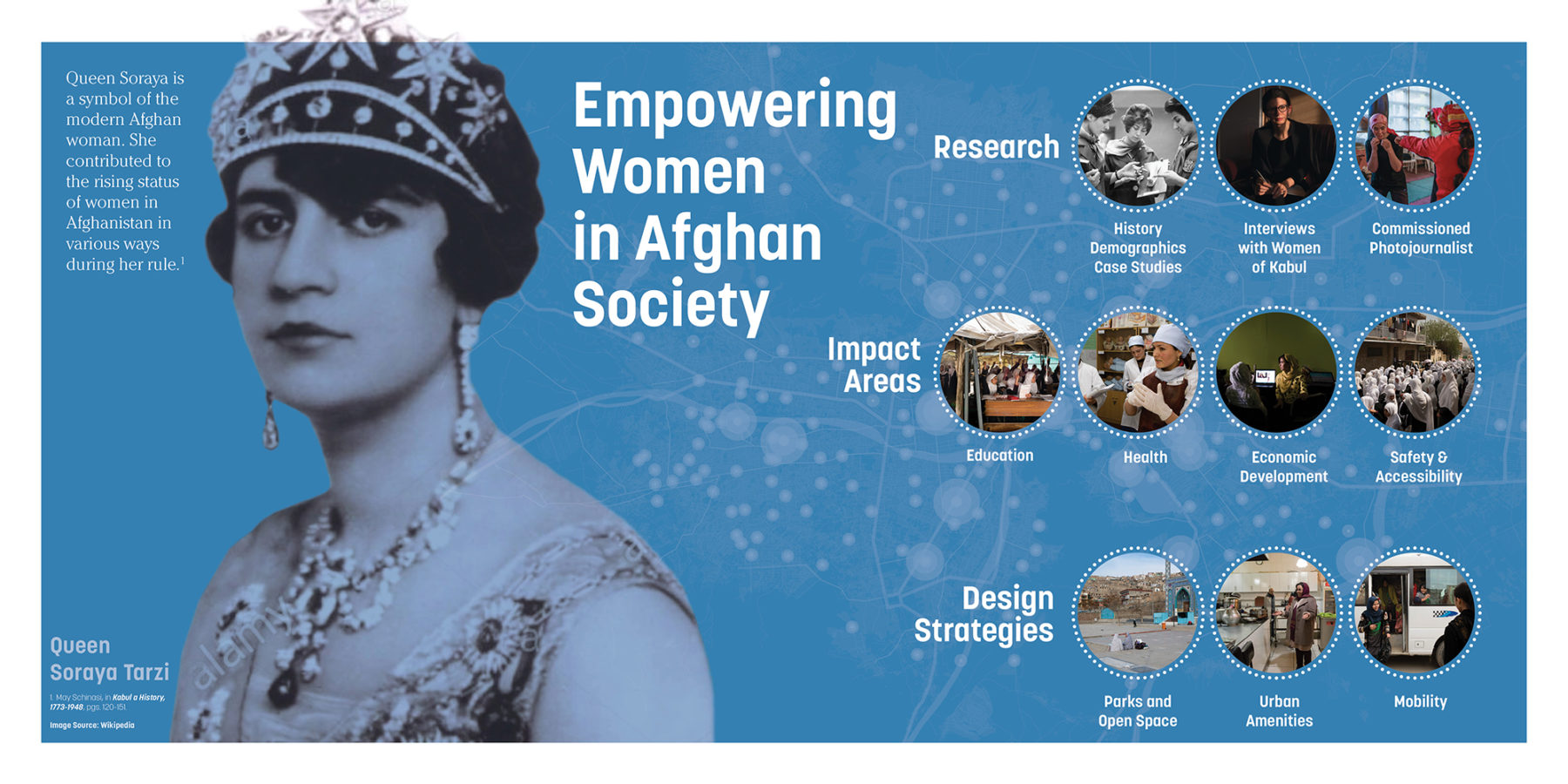
The Urban Design Framework sends a clear message of the importance of designing a city for all, where access to opportunity is available to everyone. Through months of research and interviews, a series of strategies were developed and integrated in this Framework to empower women in Afghan society.
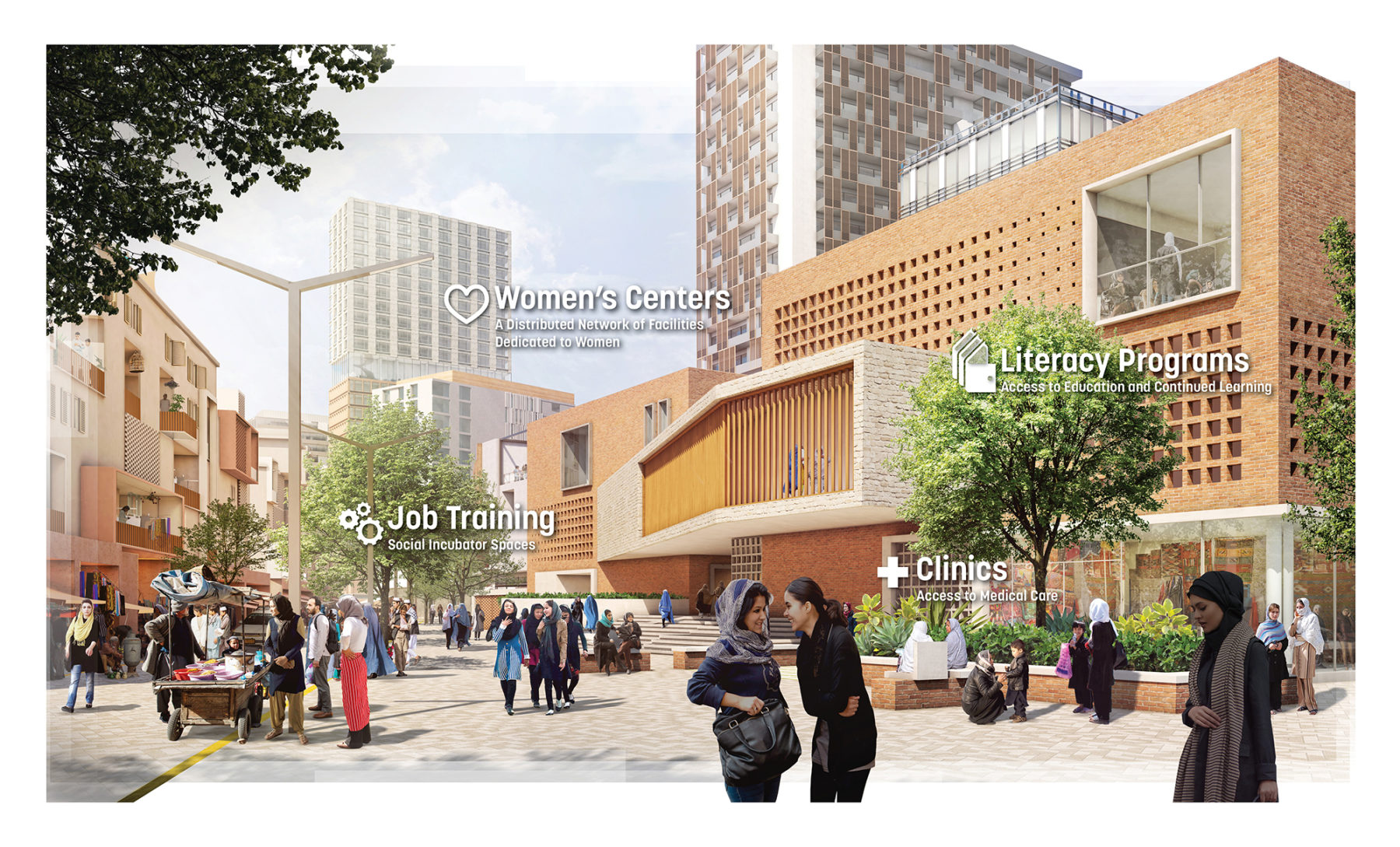
Directly originating from research, a proposed citywide network of urban amenities dedicated to women is a key component of this framework, providing basic services, such as clinics and daycares, as well as opportunities for arts, culture, and education
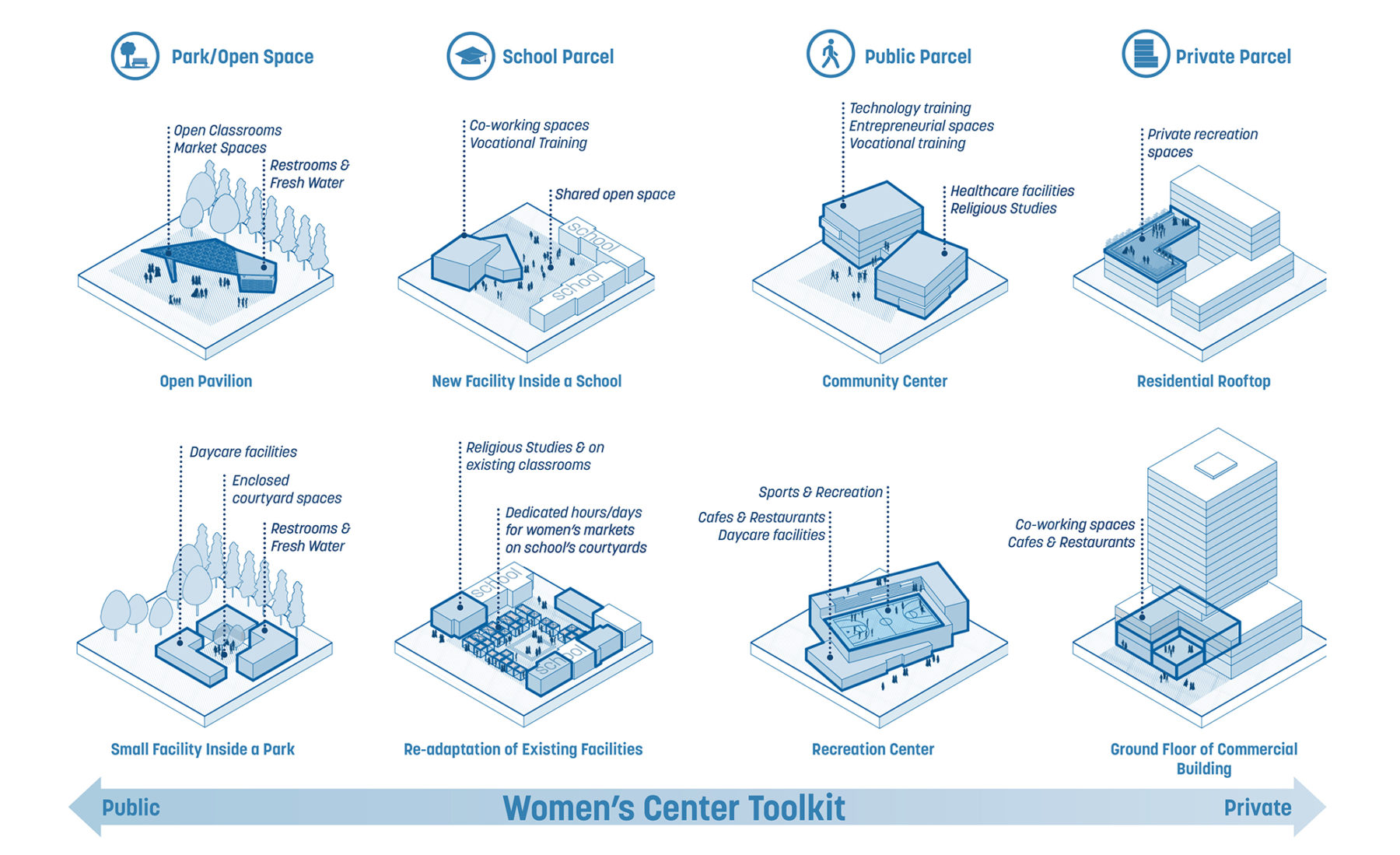
Women in Kabul face a number of structural and implicit biases that inhibit their ability to claim space. A special Women’s Center Tooklit offers strategies to make women feel safer and more welcome from the public to private realm.
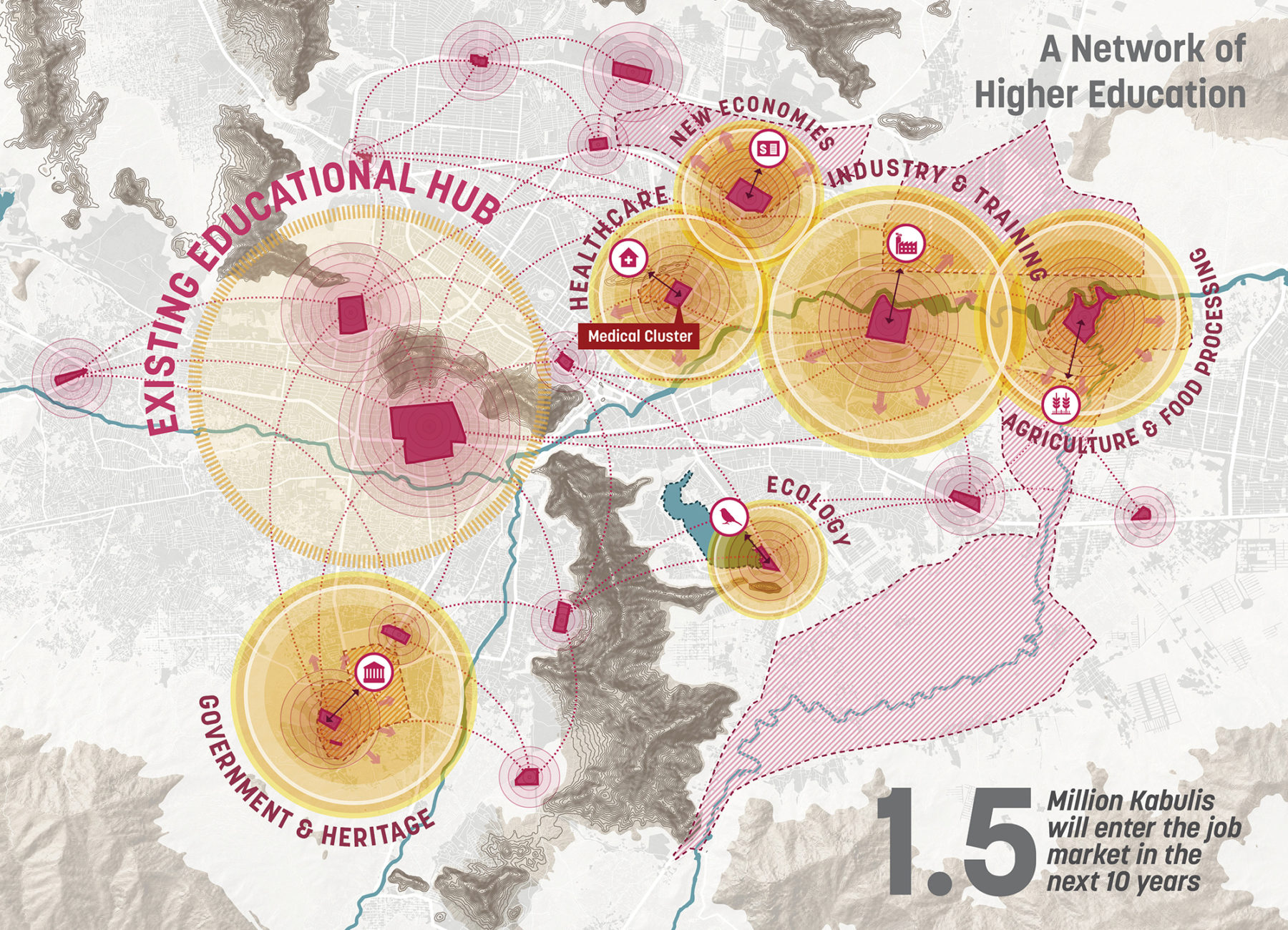
The Medical Cluster is part of a citywide strategy to expand access to higher education in Kabul
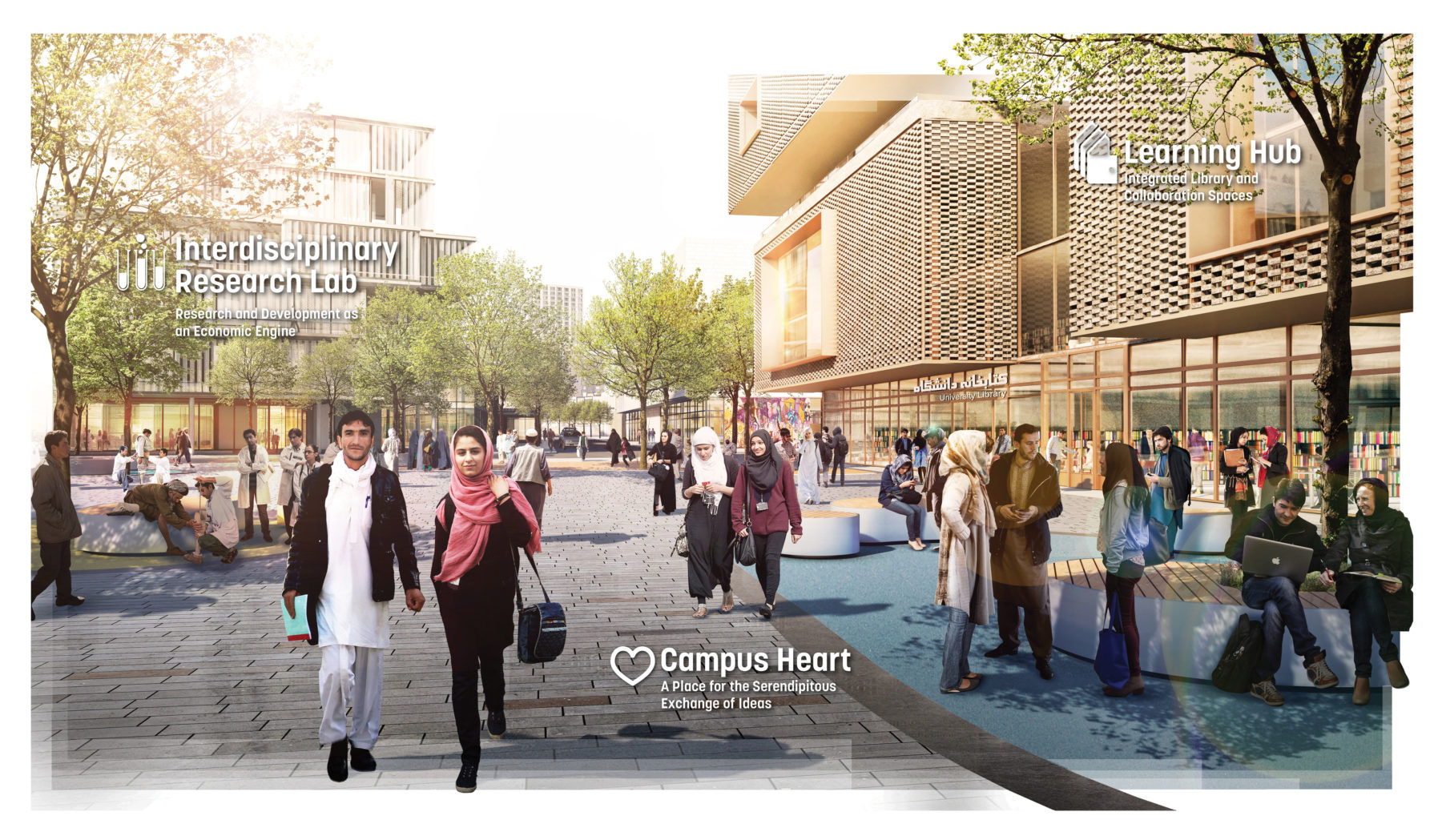
Relationships between educational institutions and the private sector will spur collaboration and research funding, fomenting new economies in Afghanistan
For more information contact Dennis Pieprz.